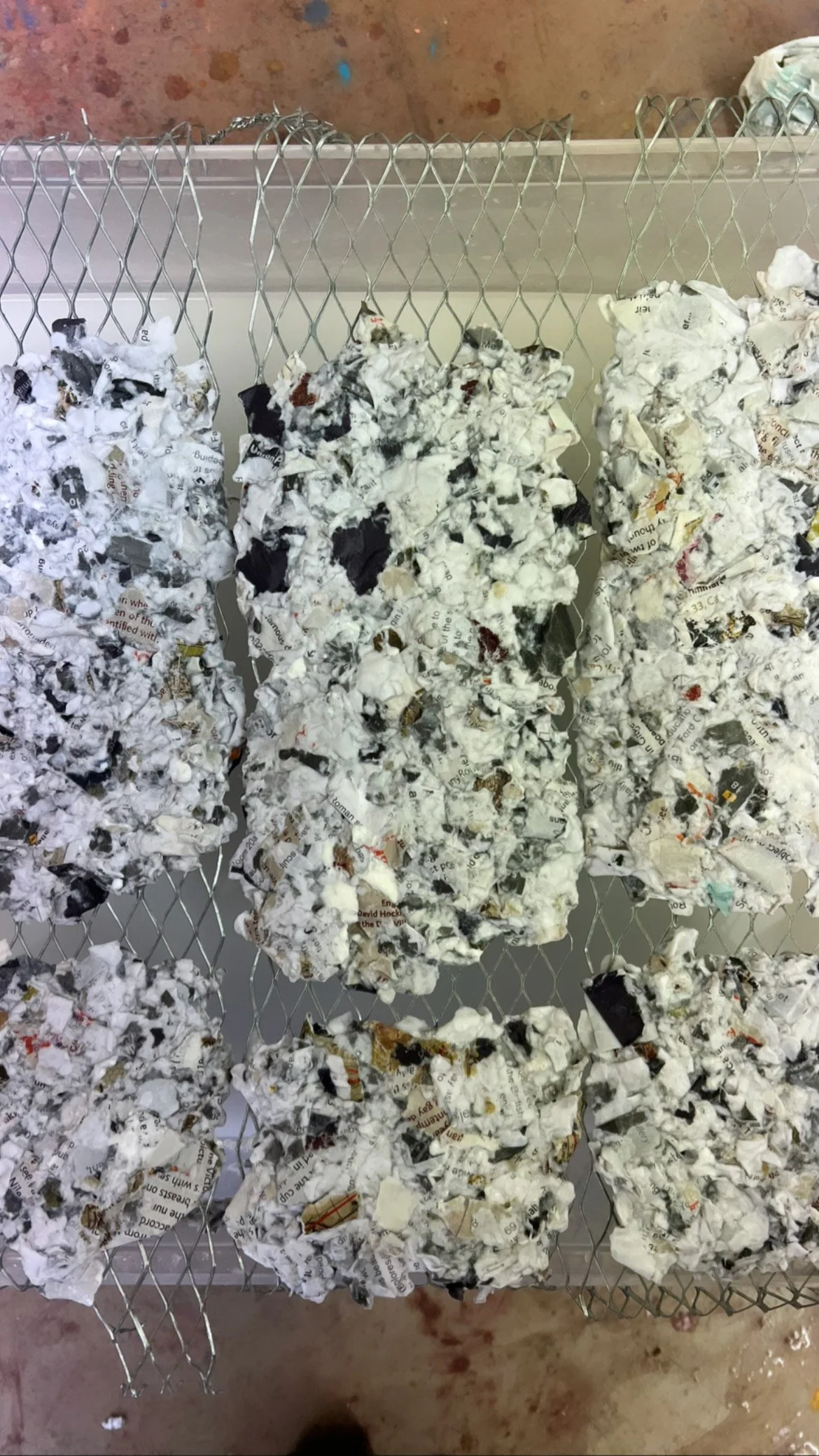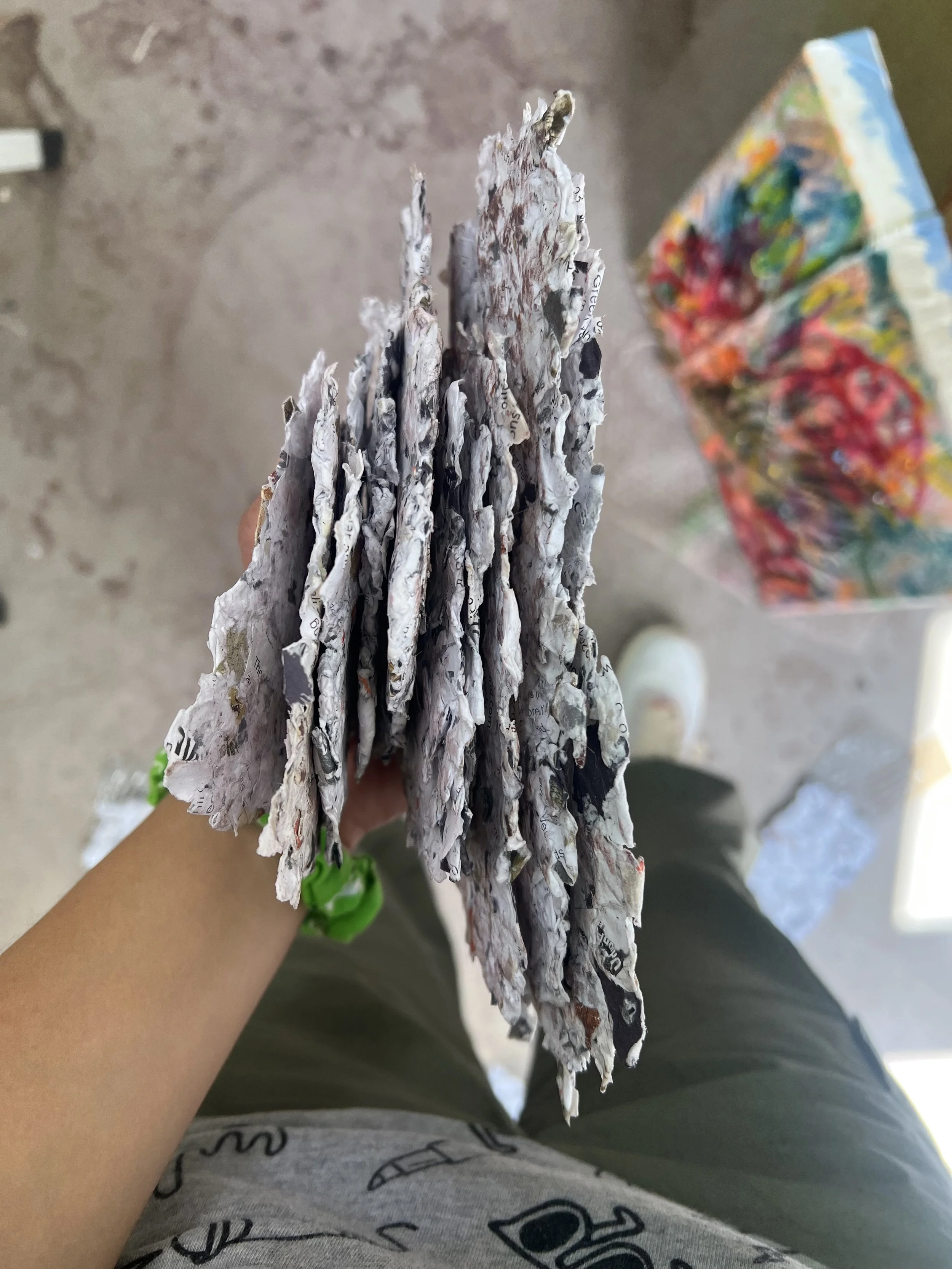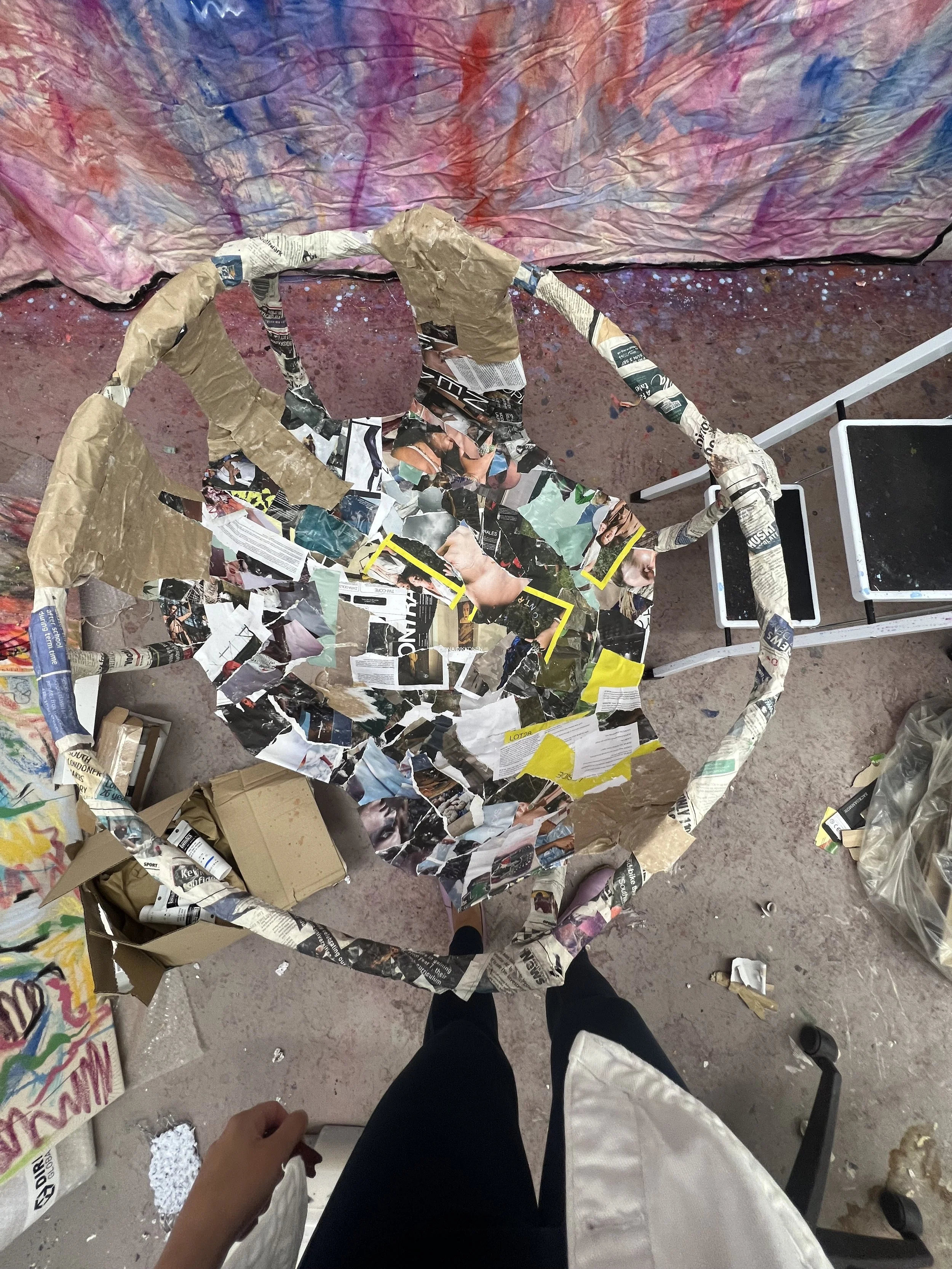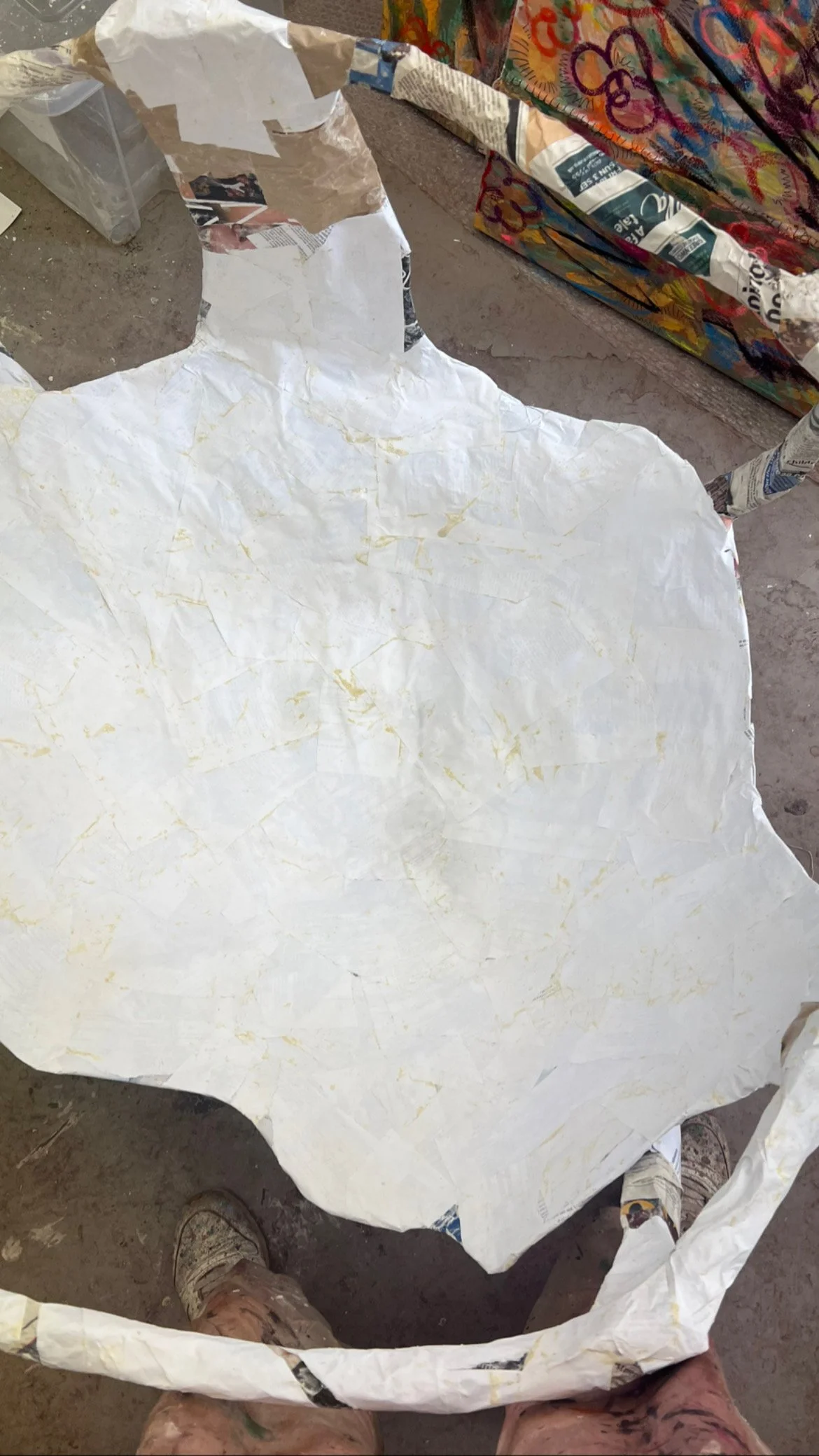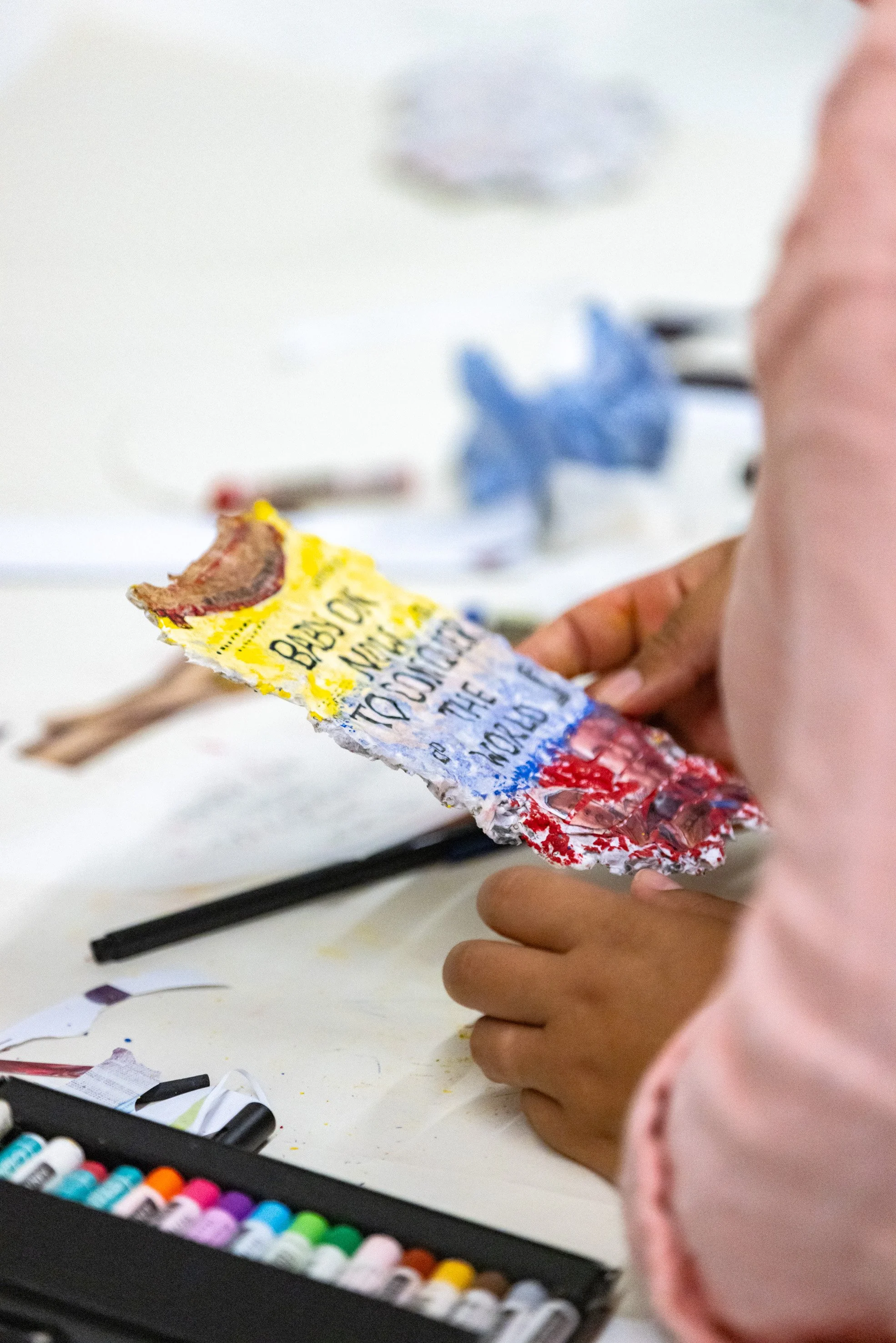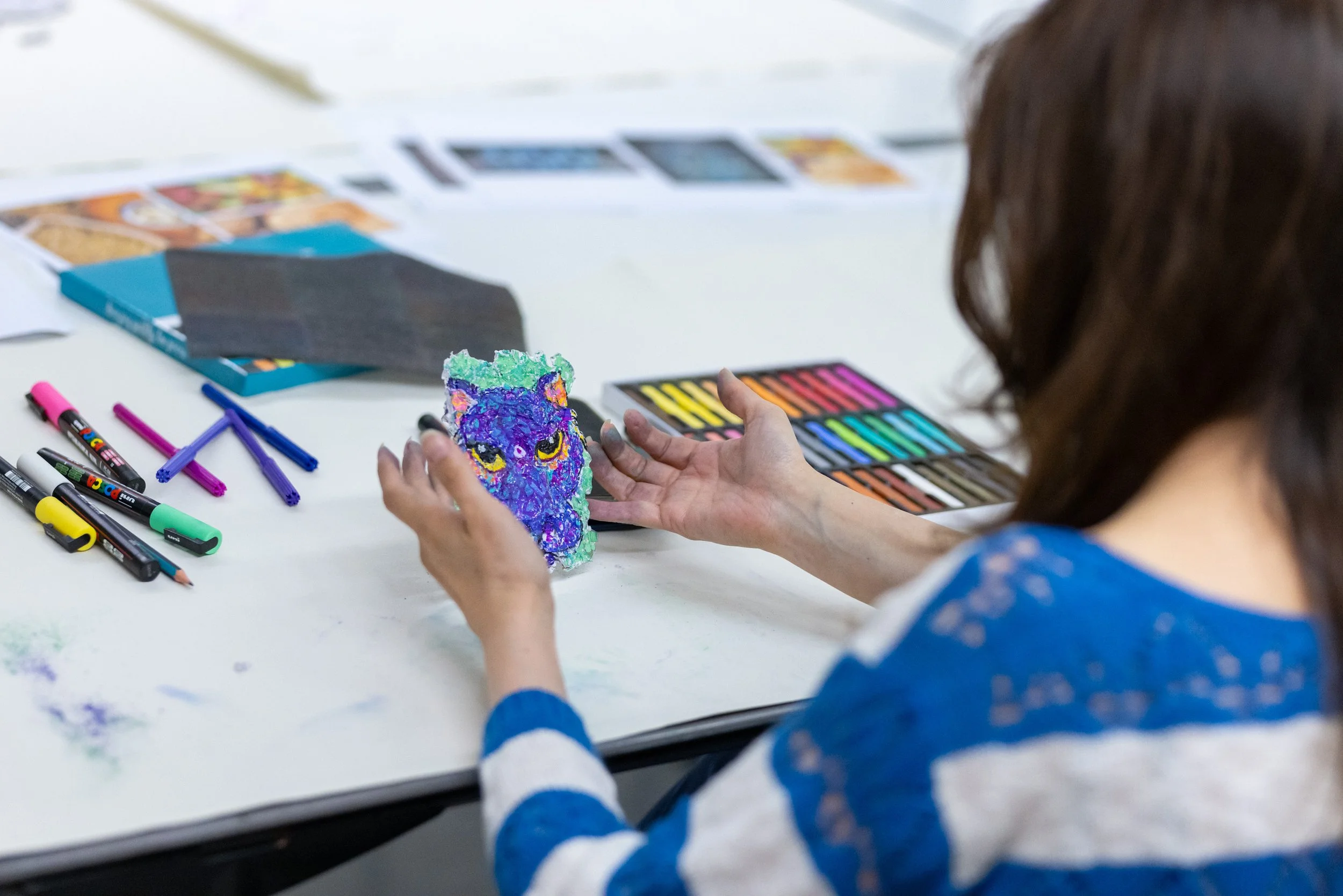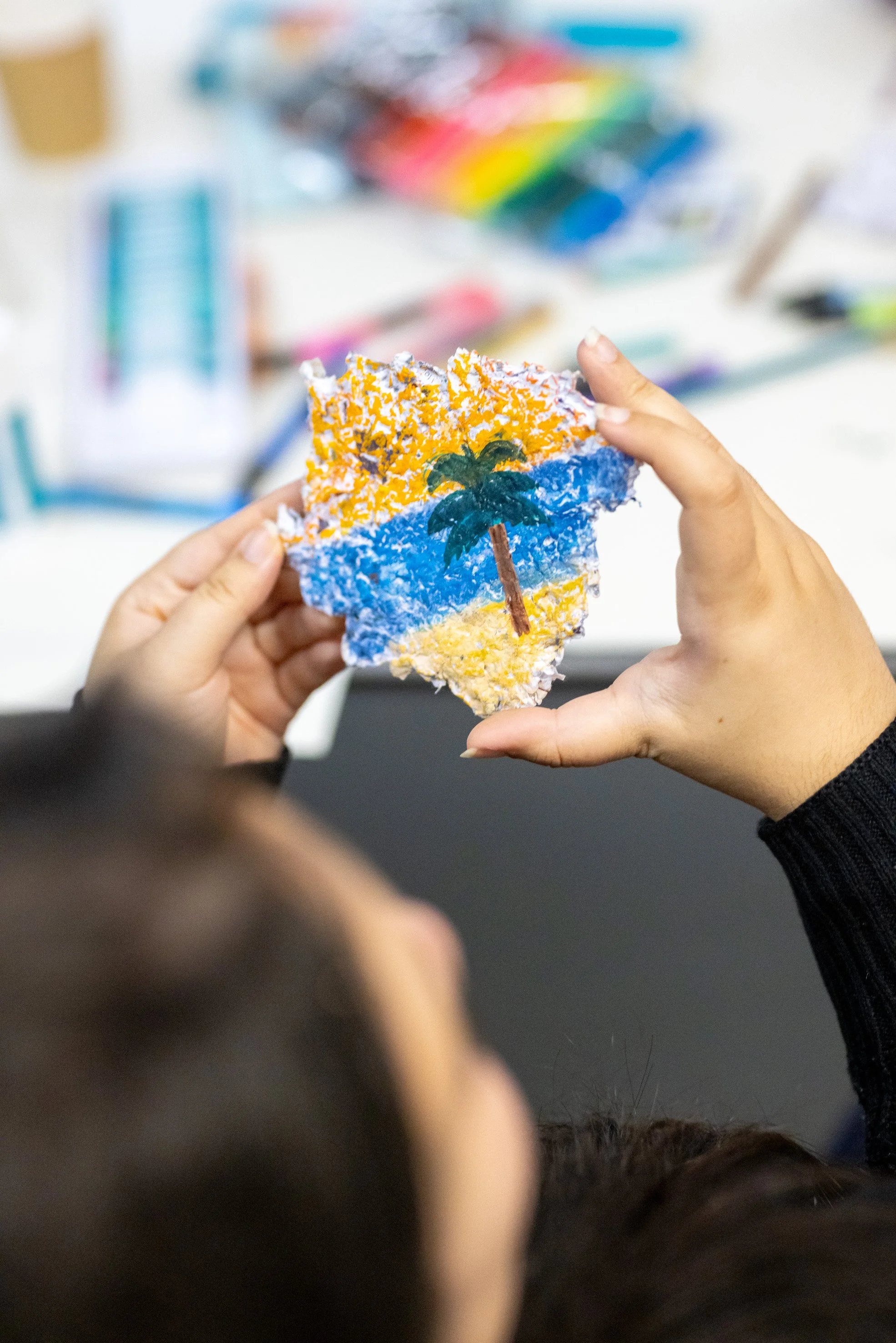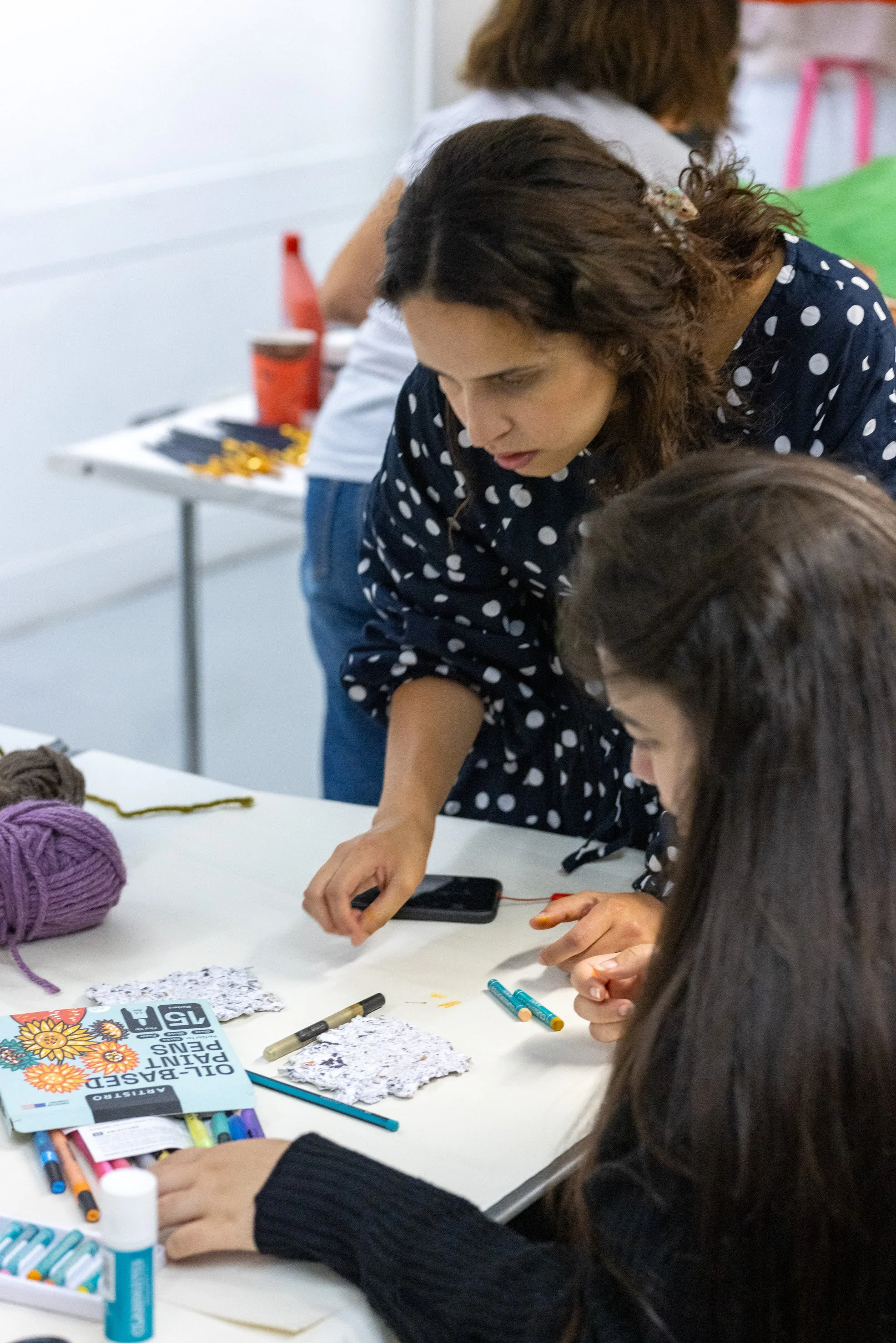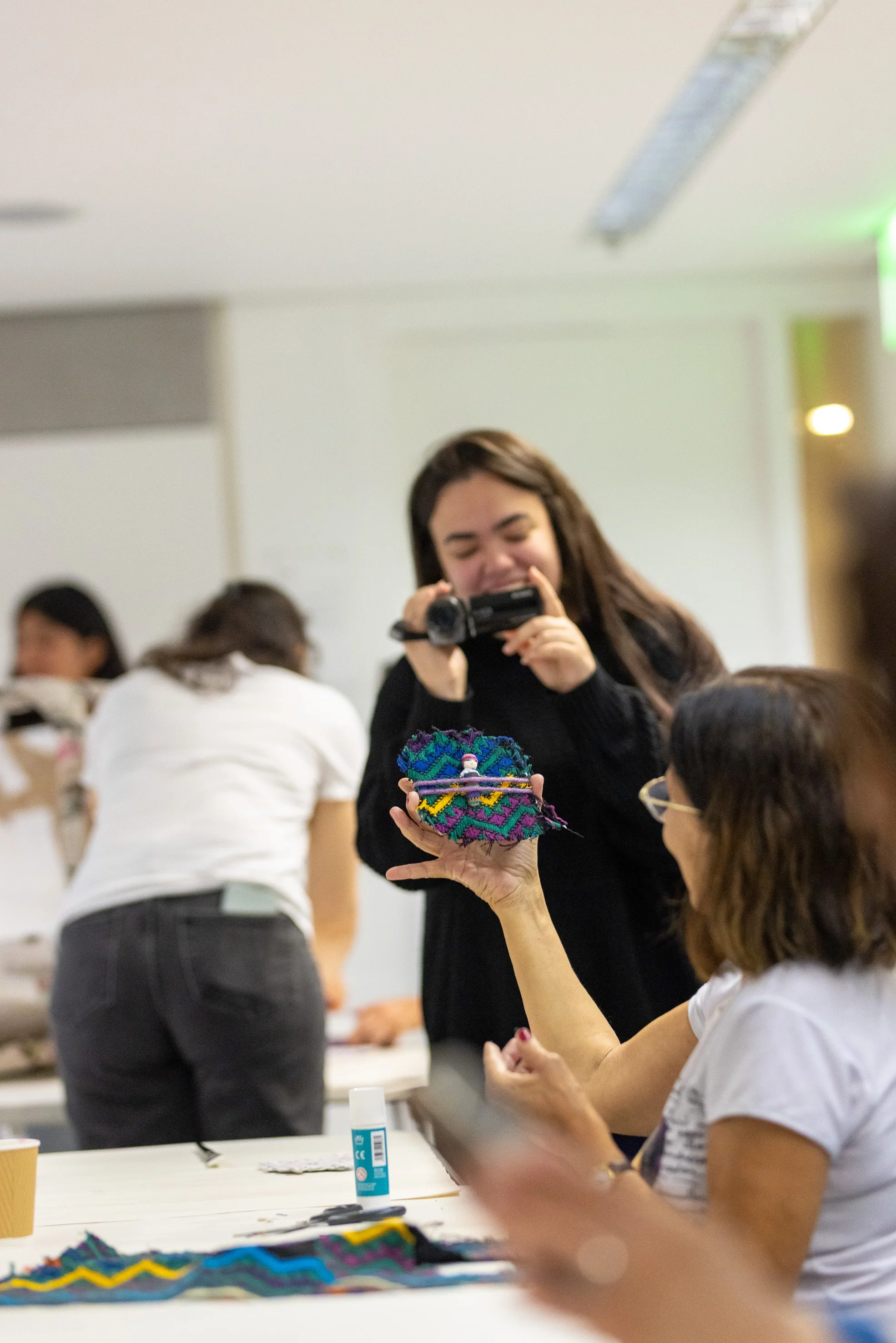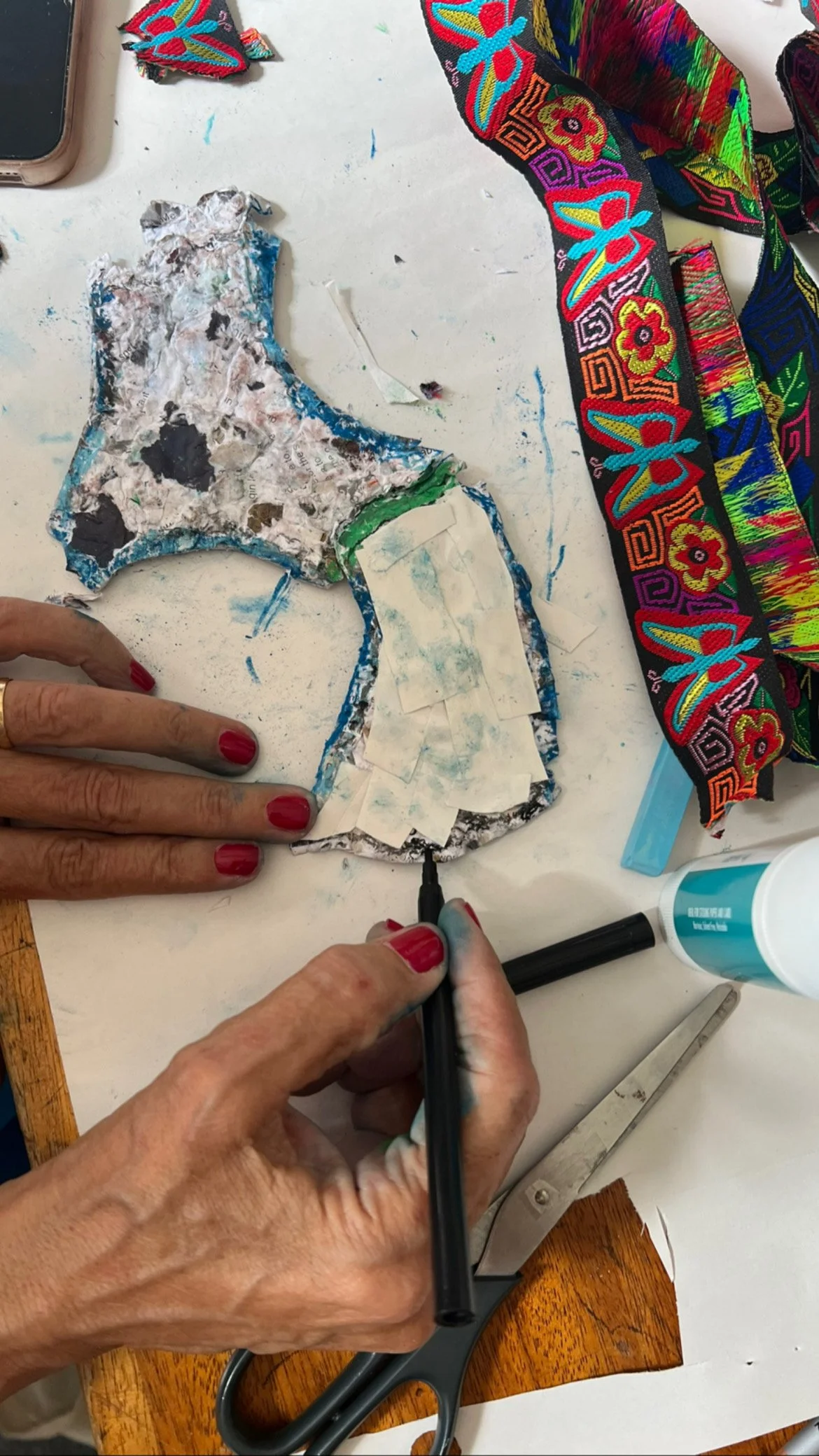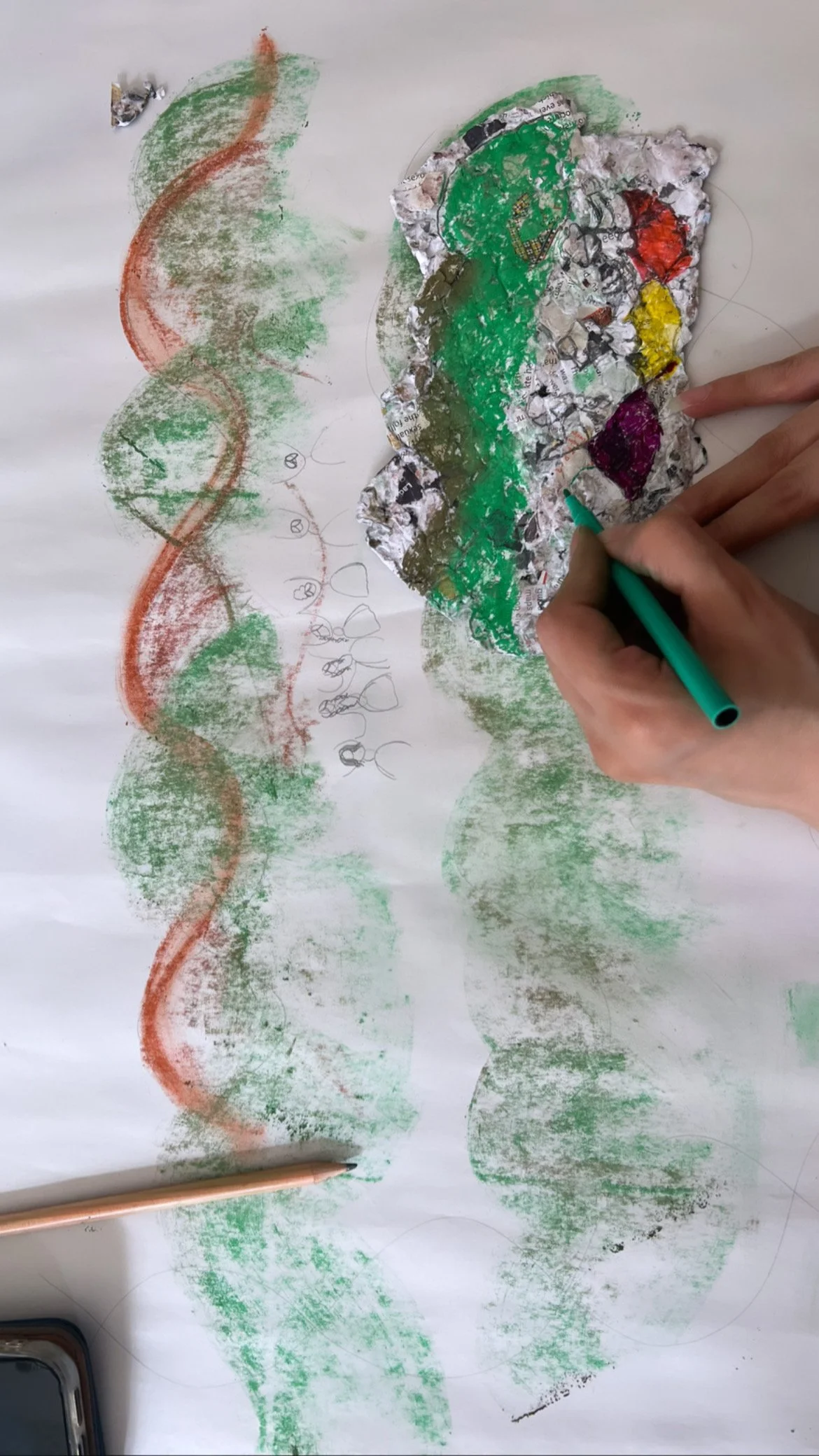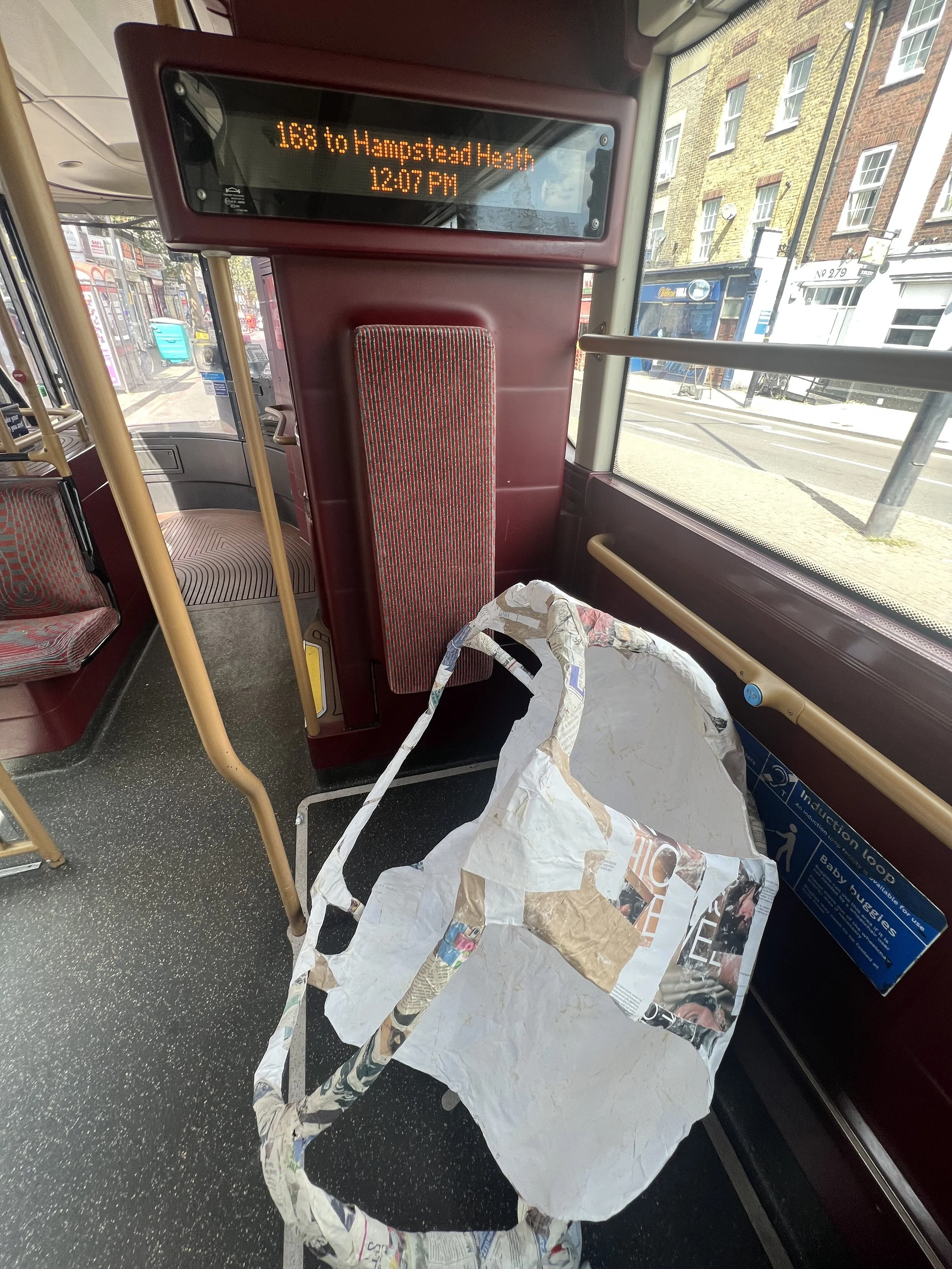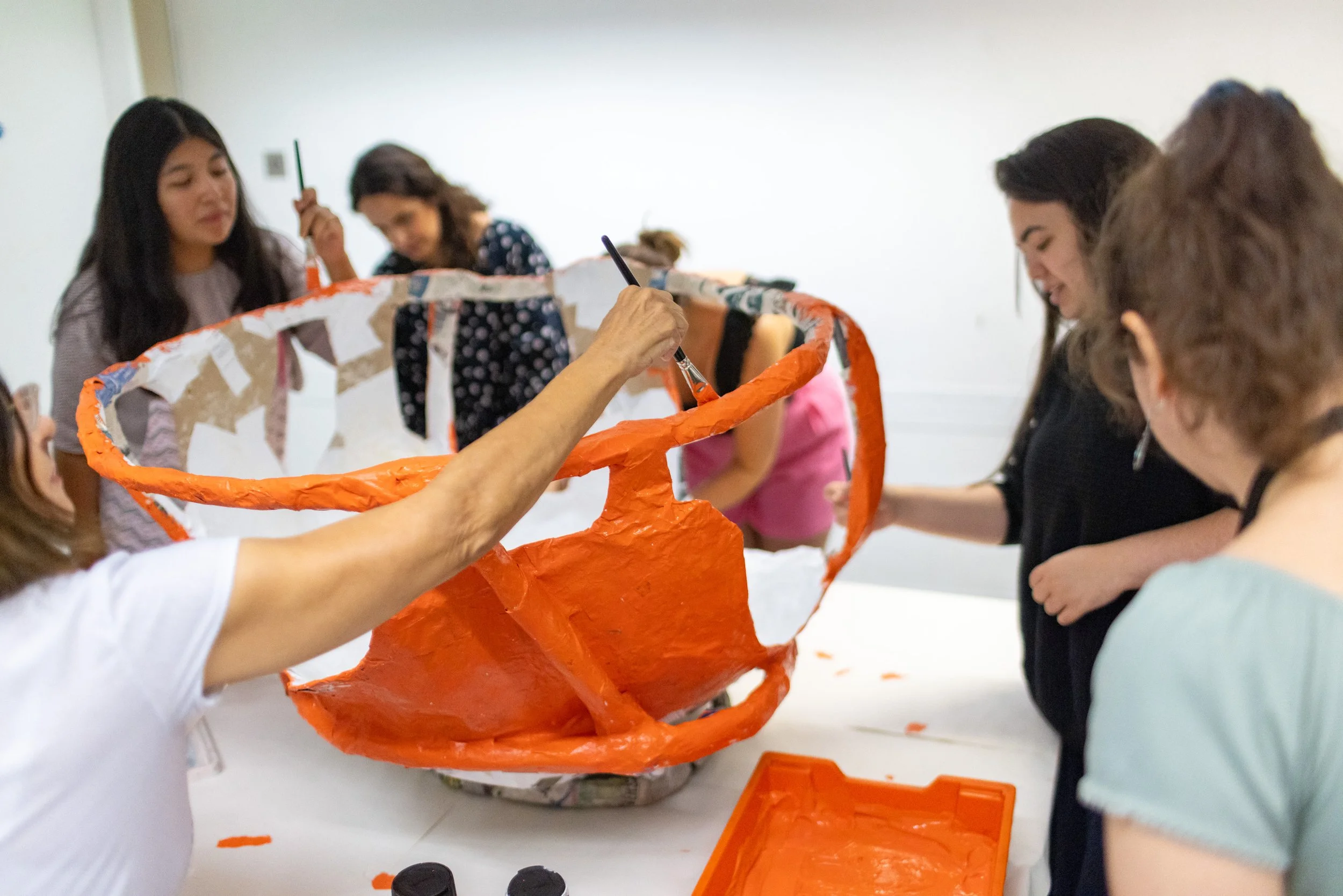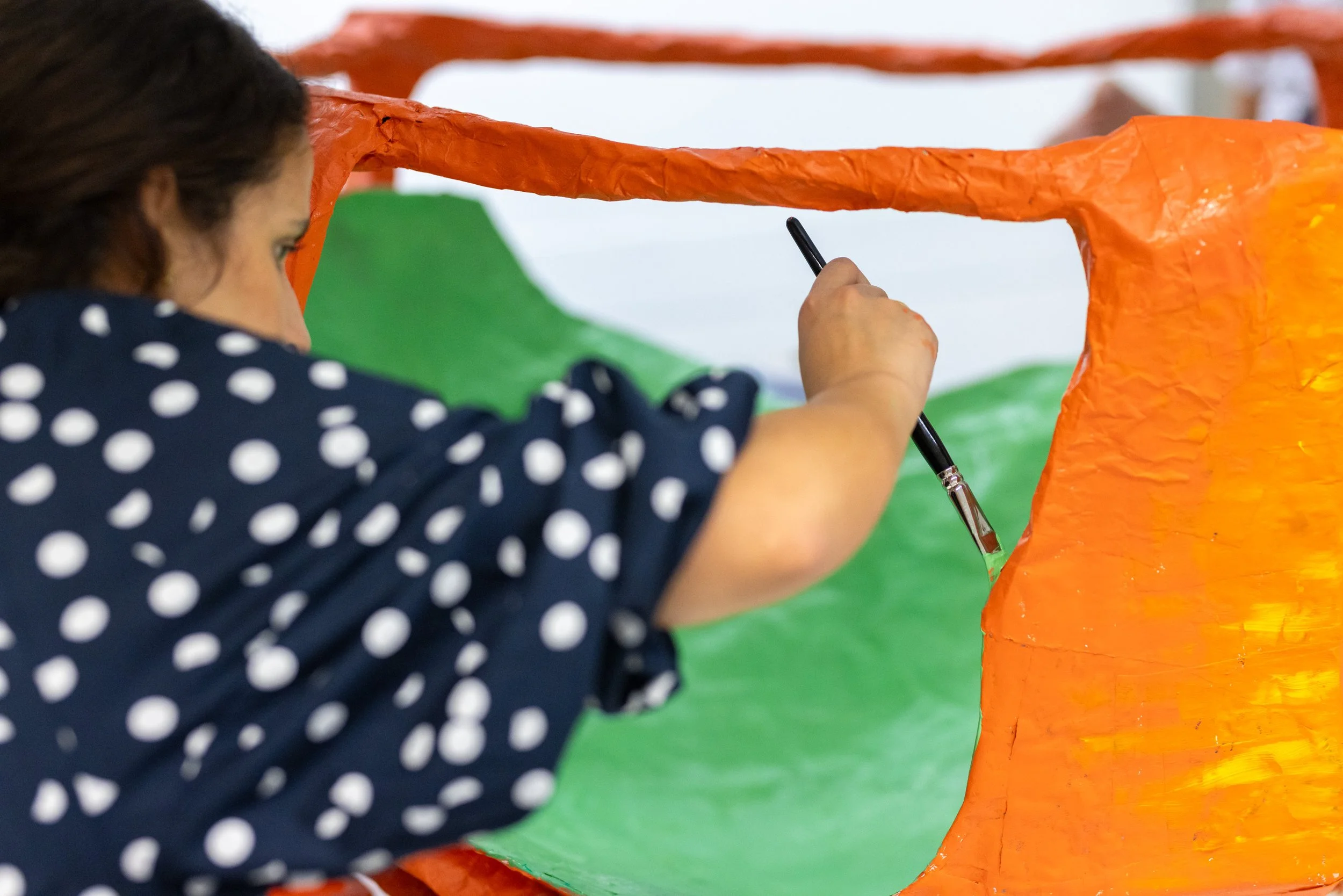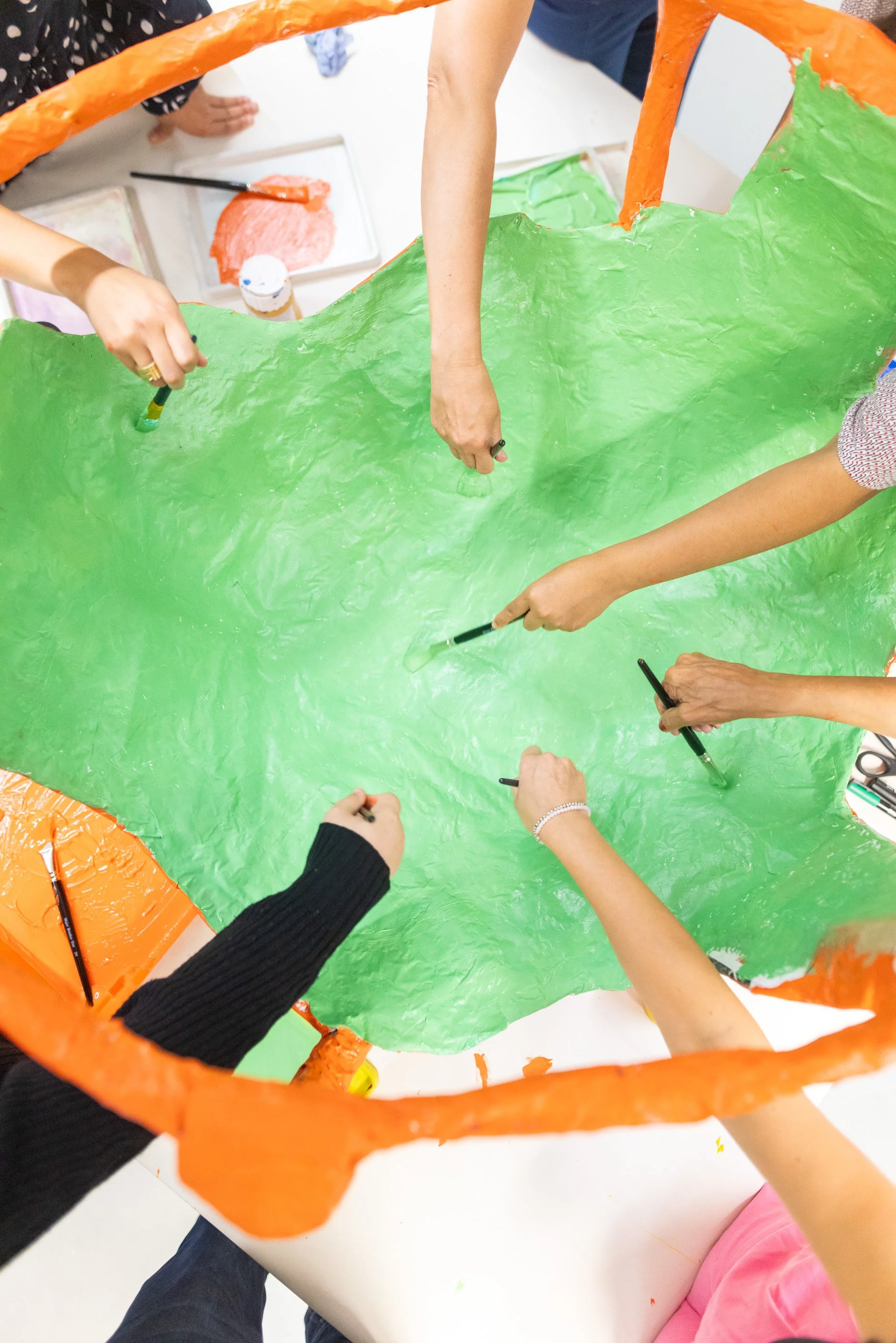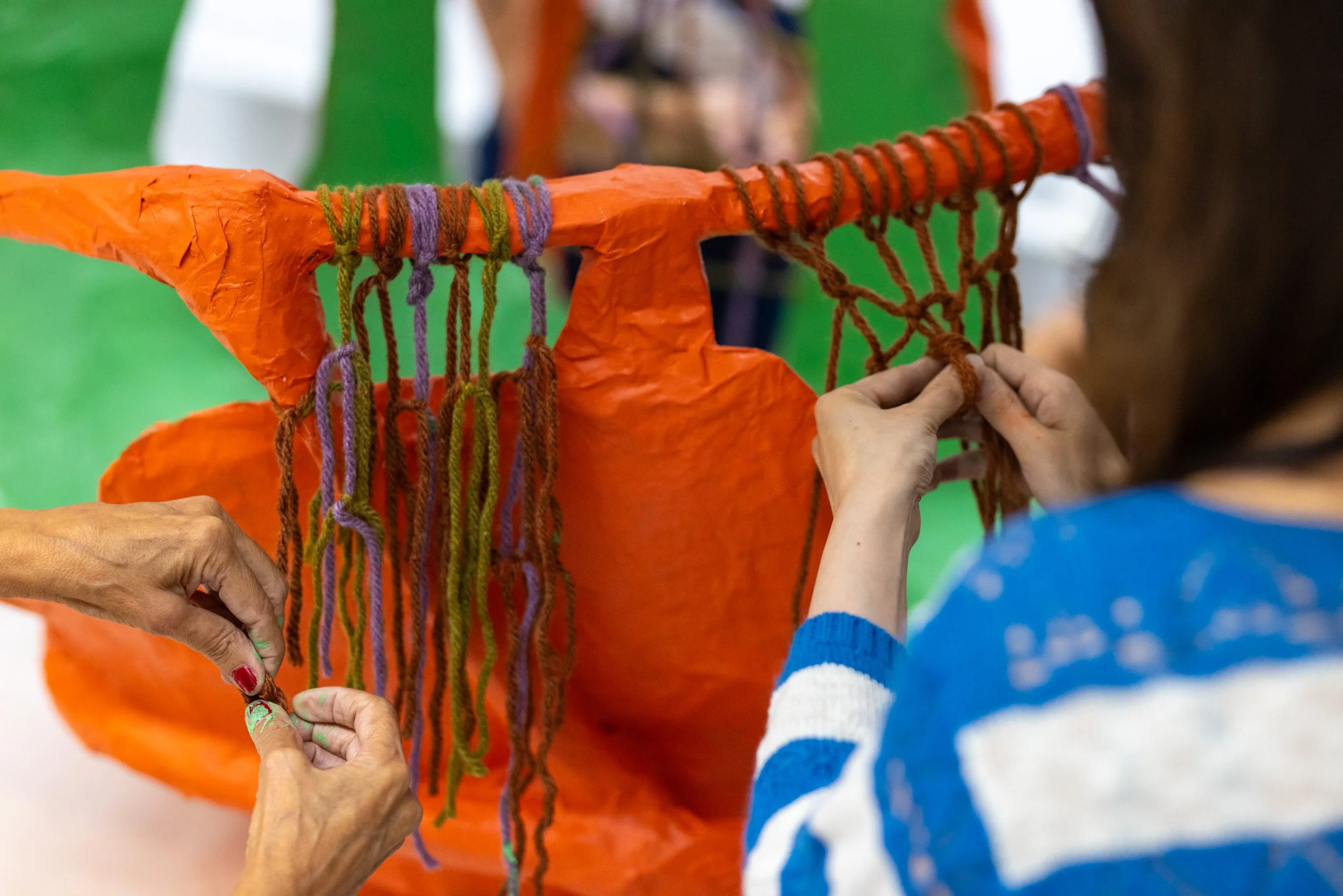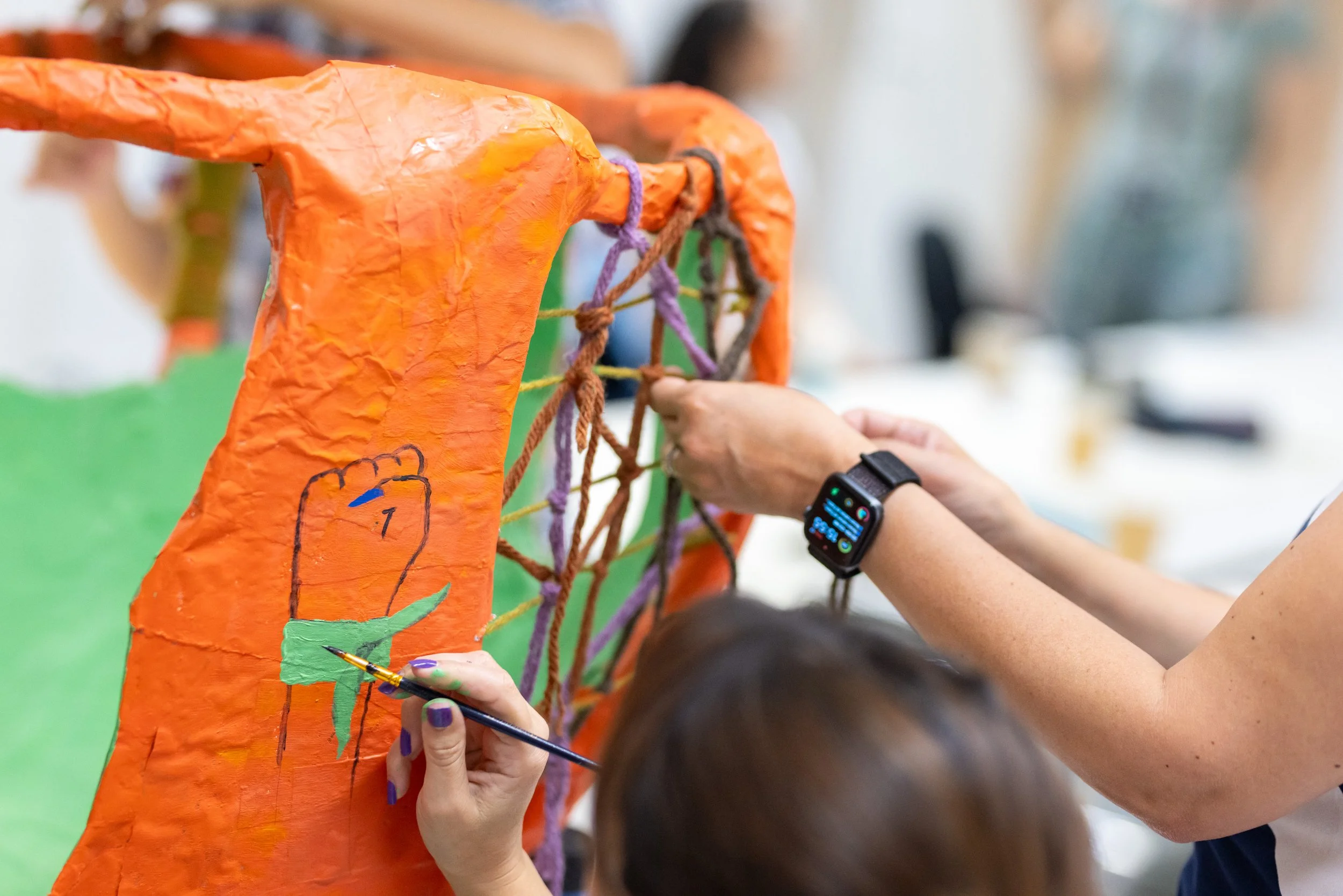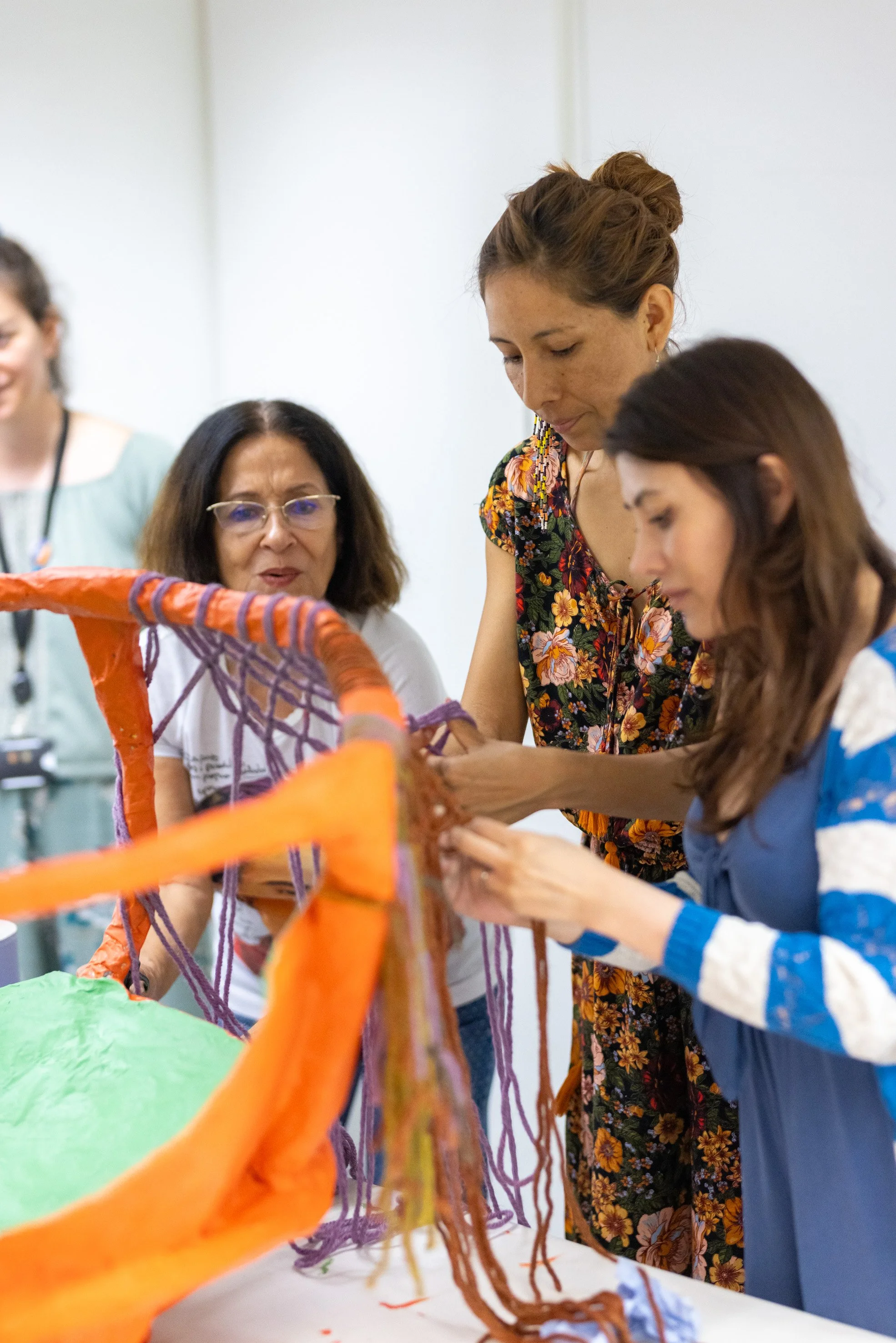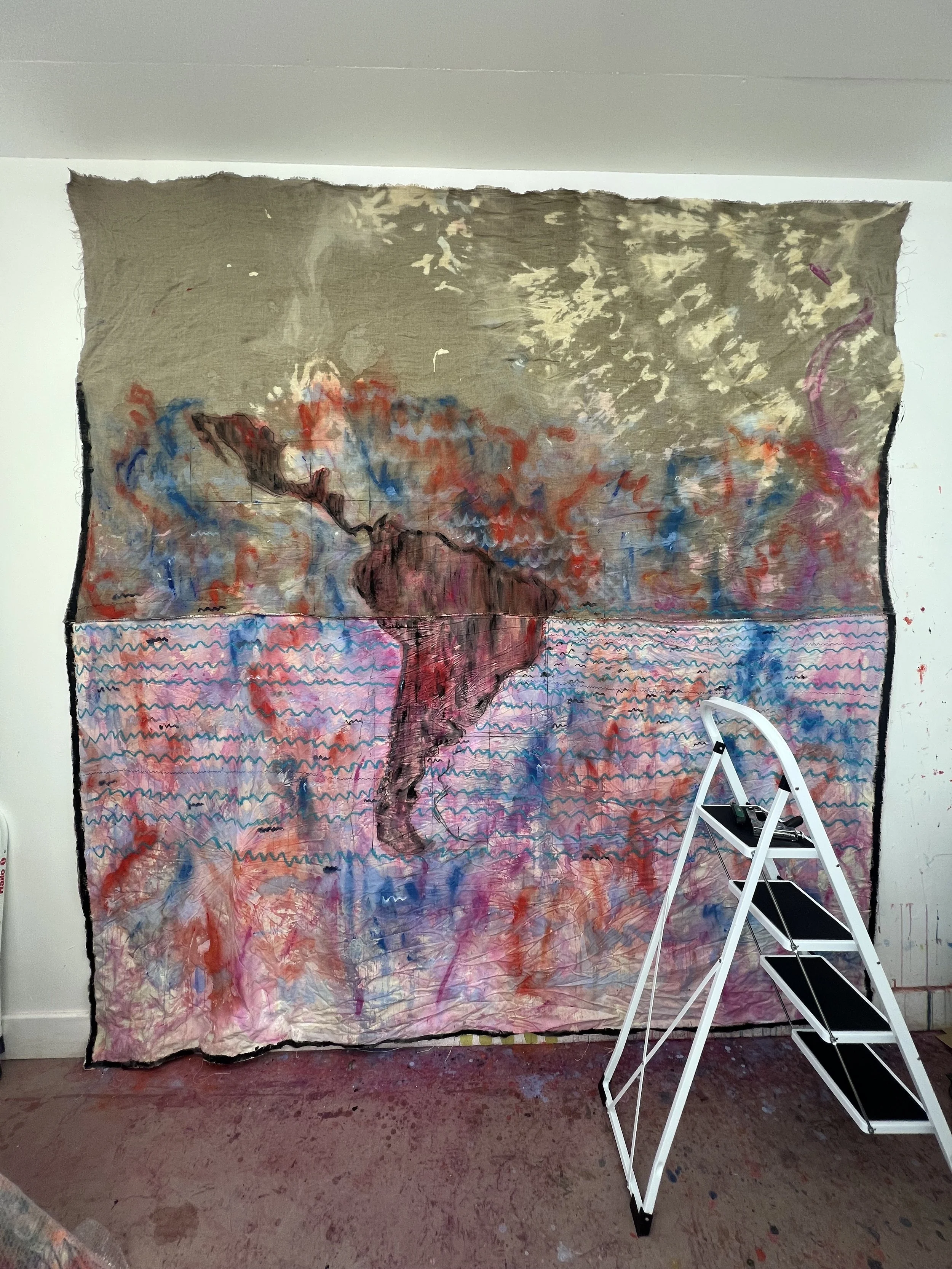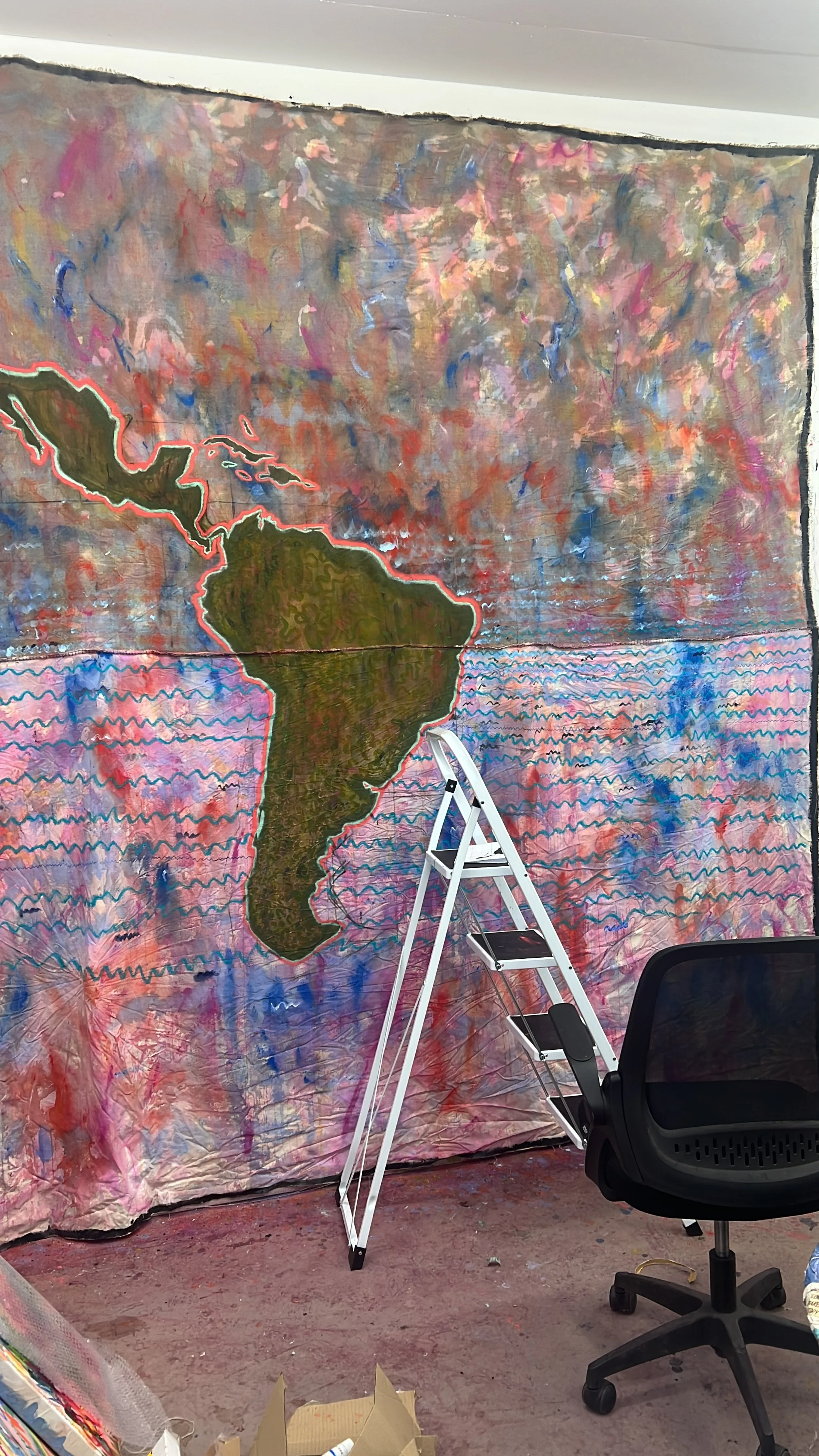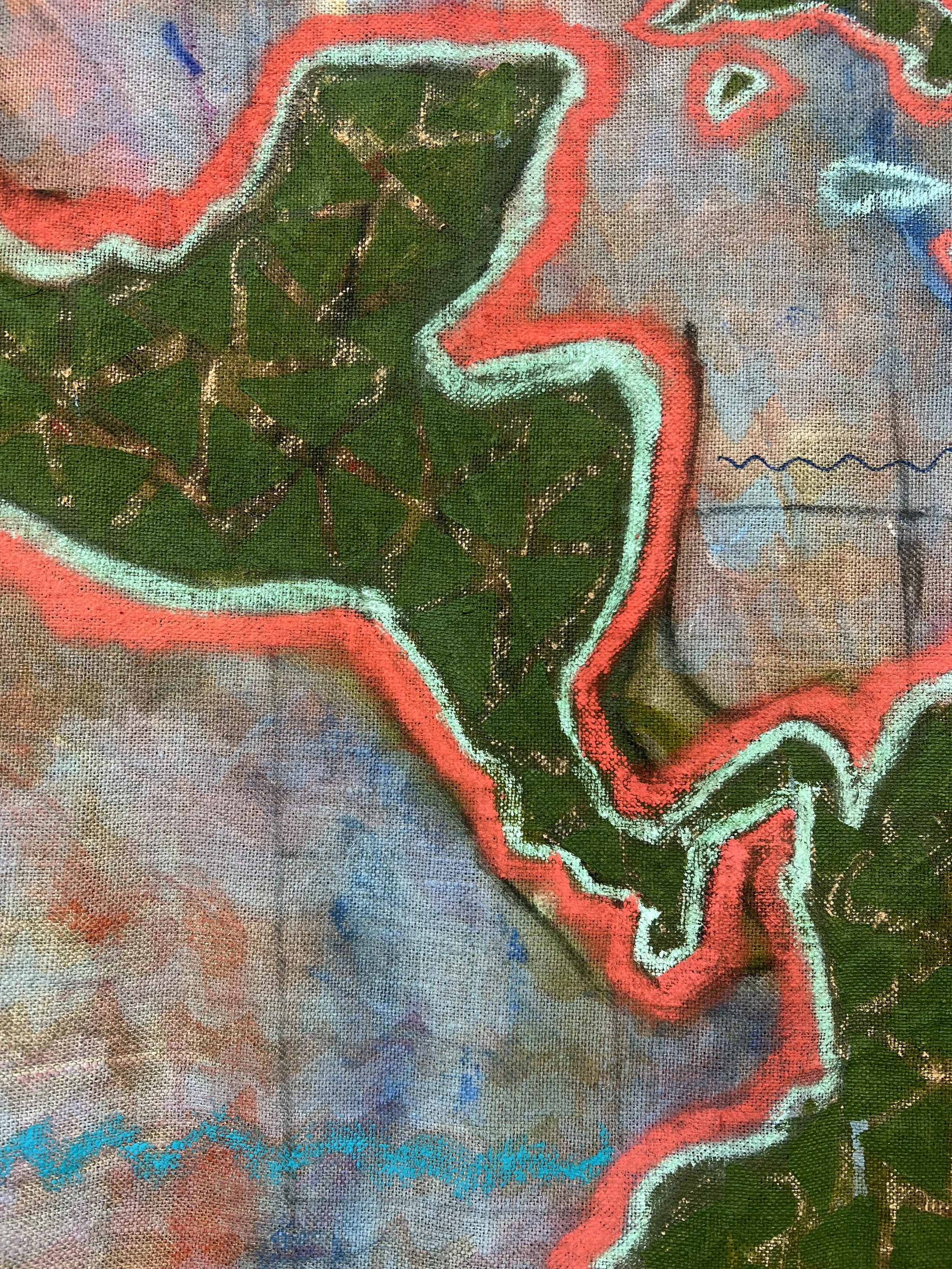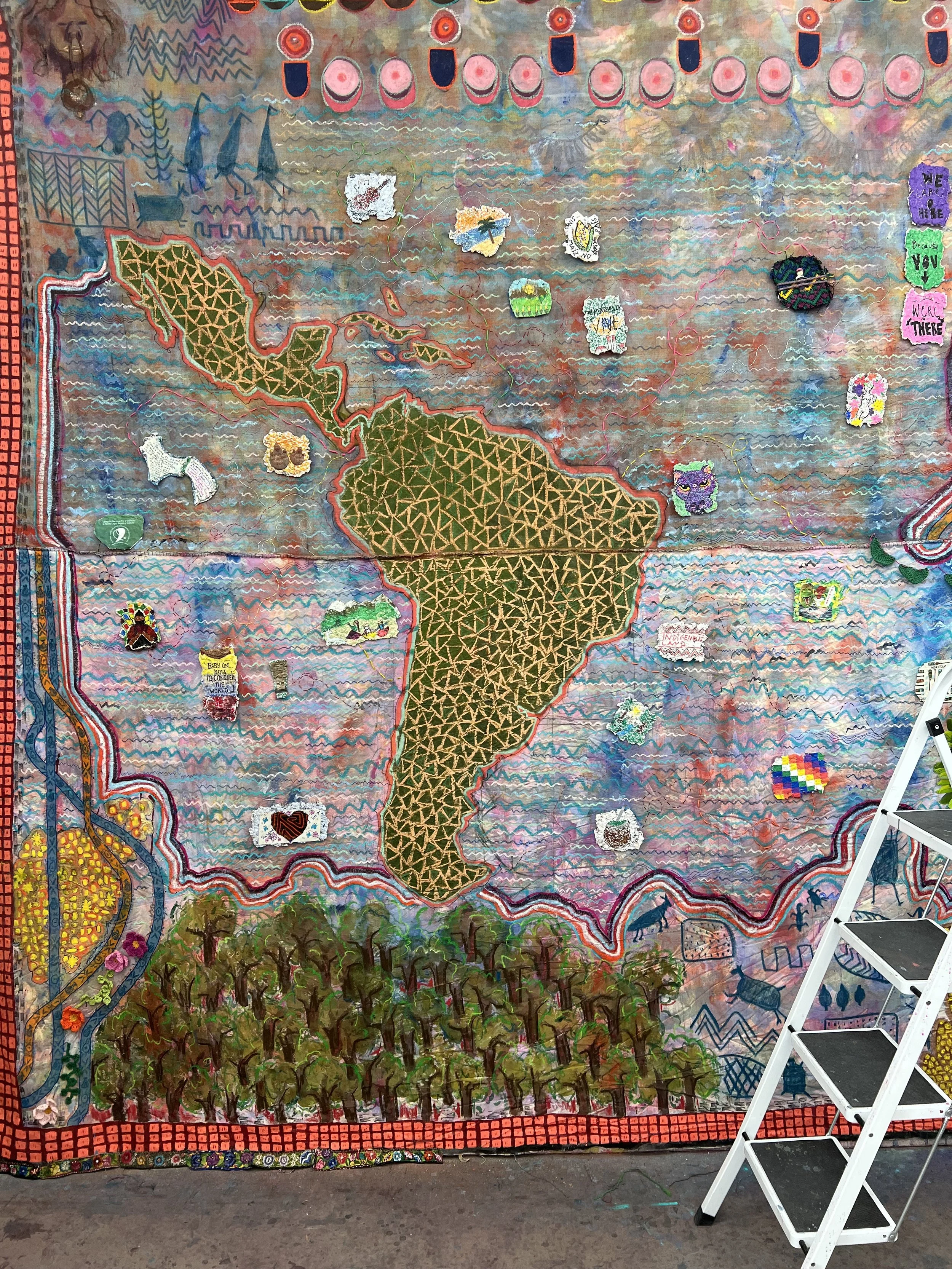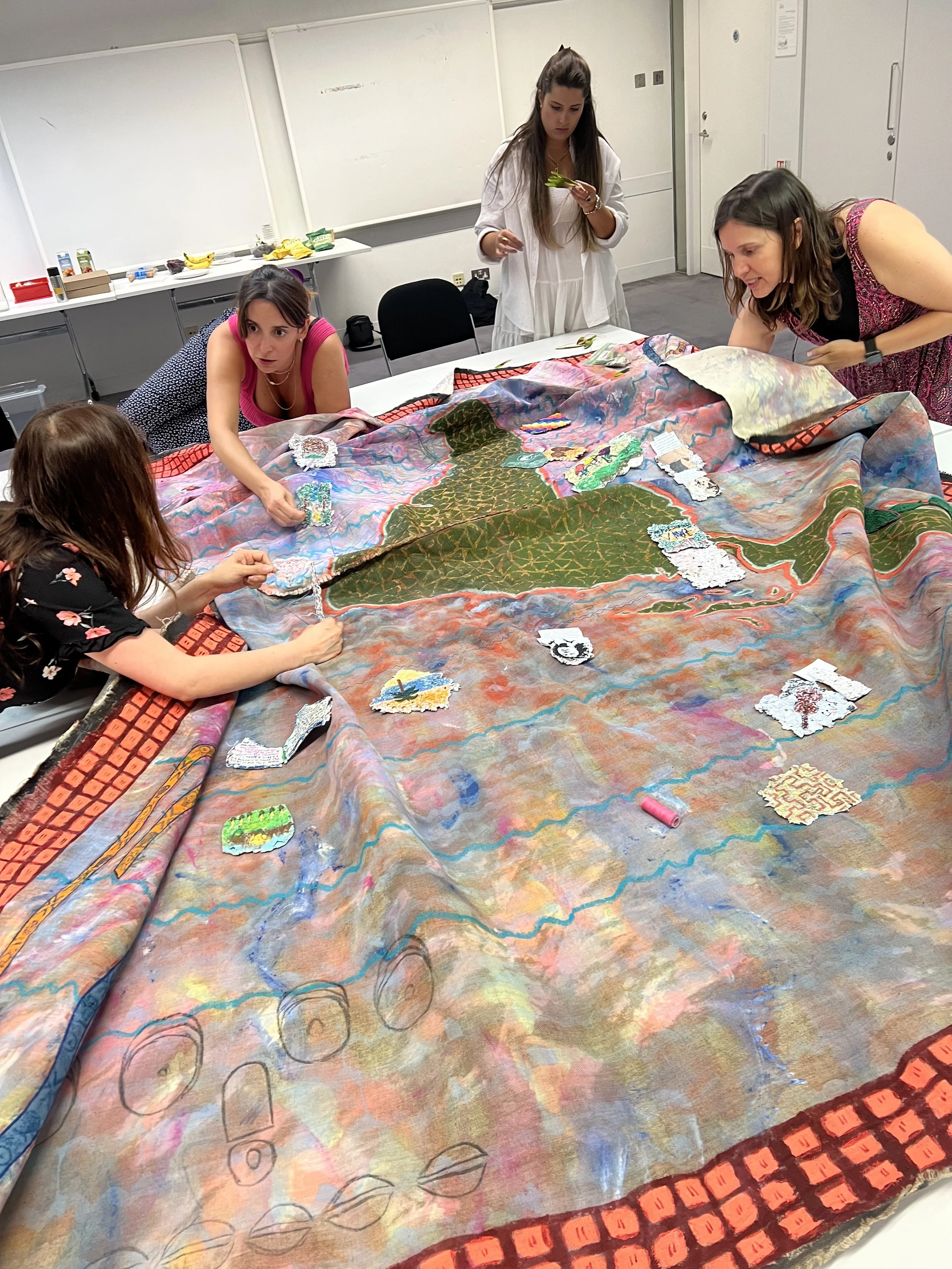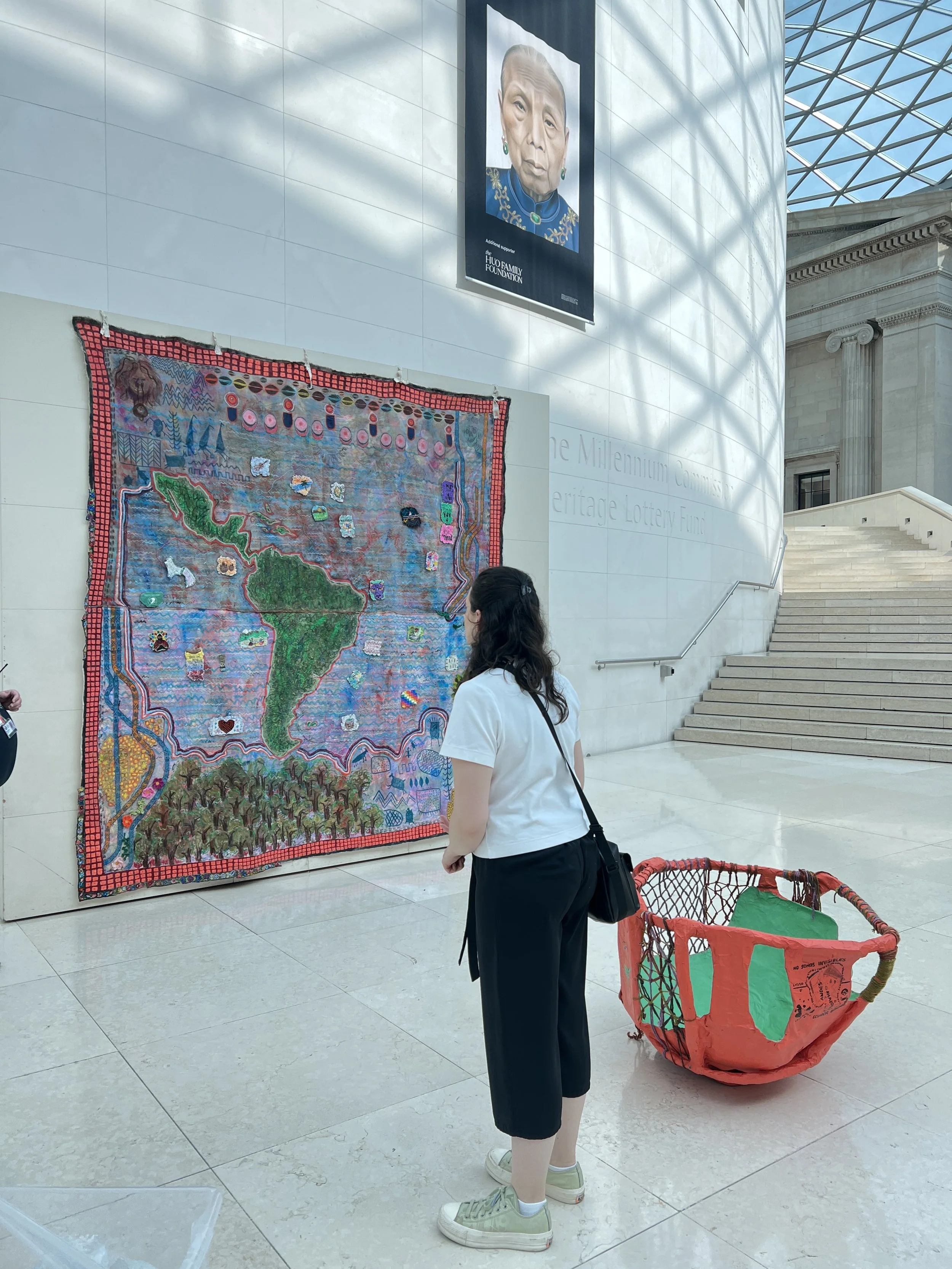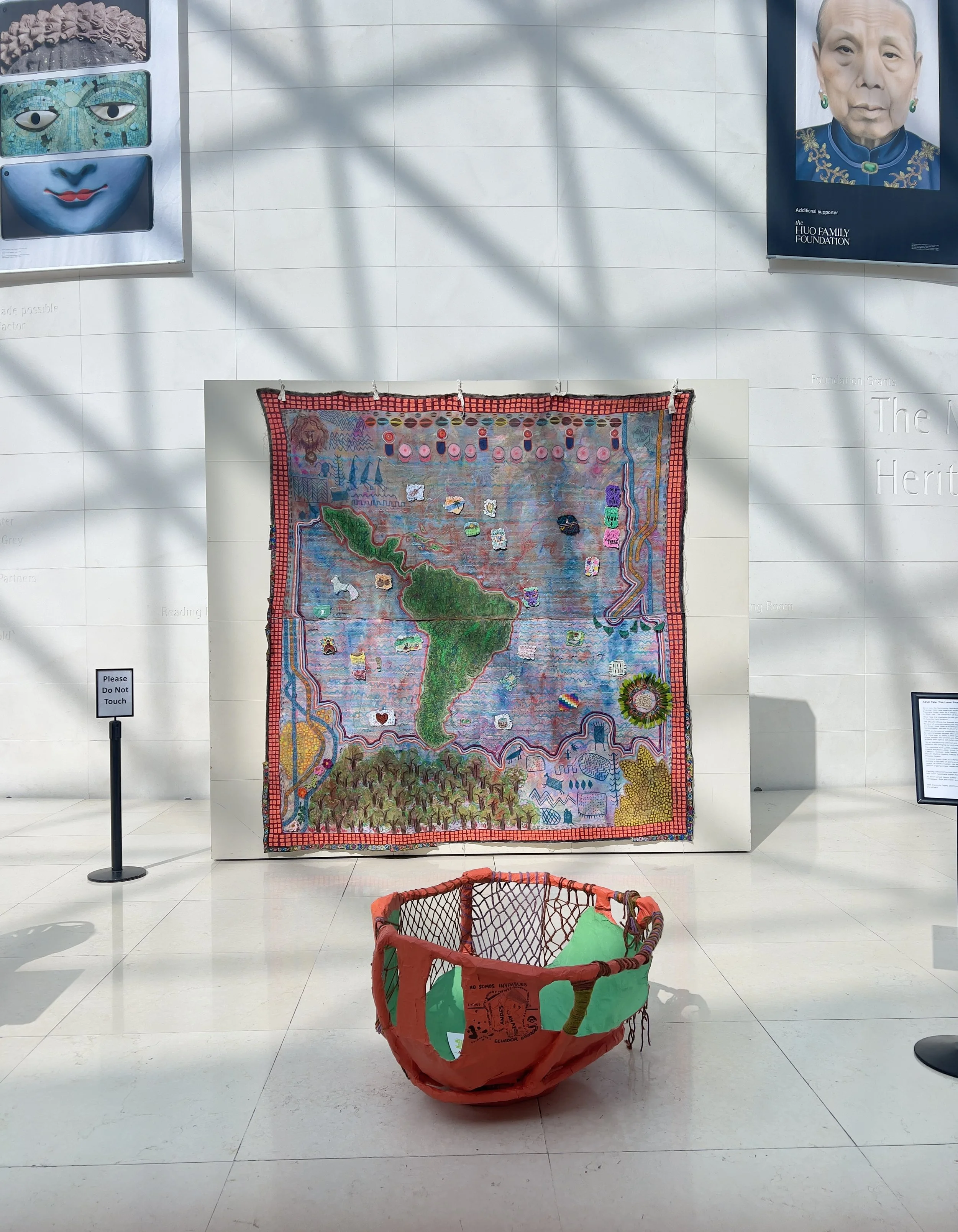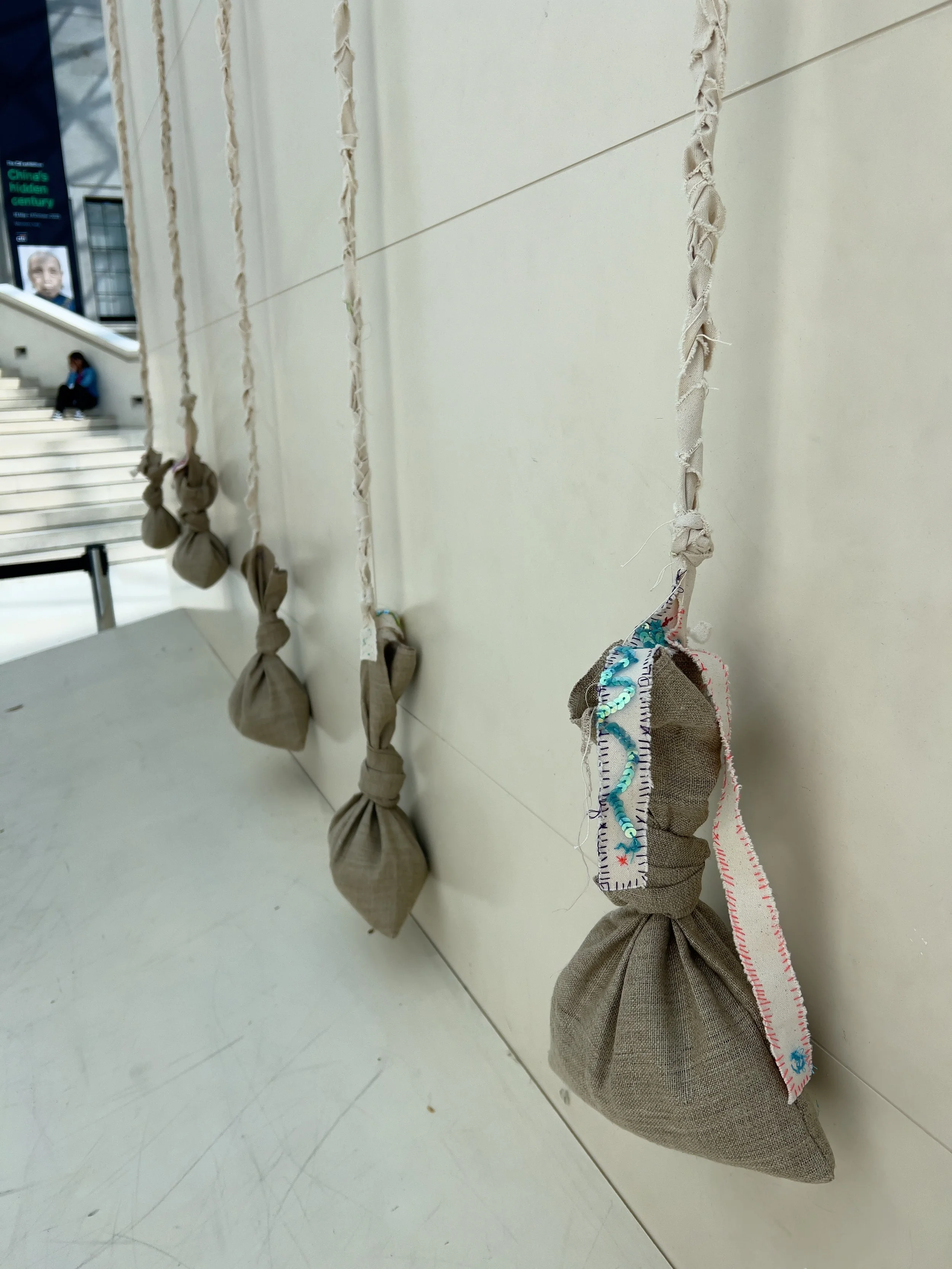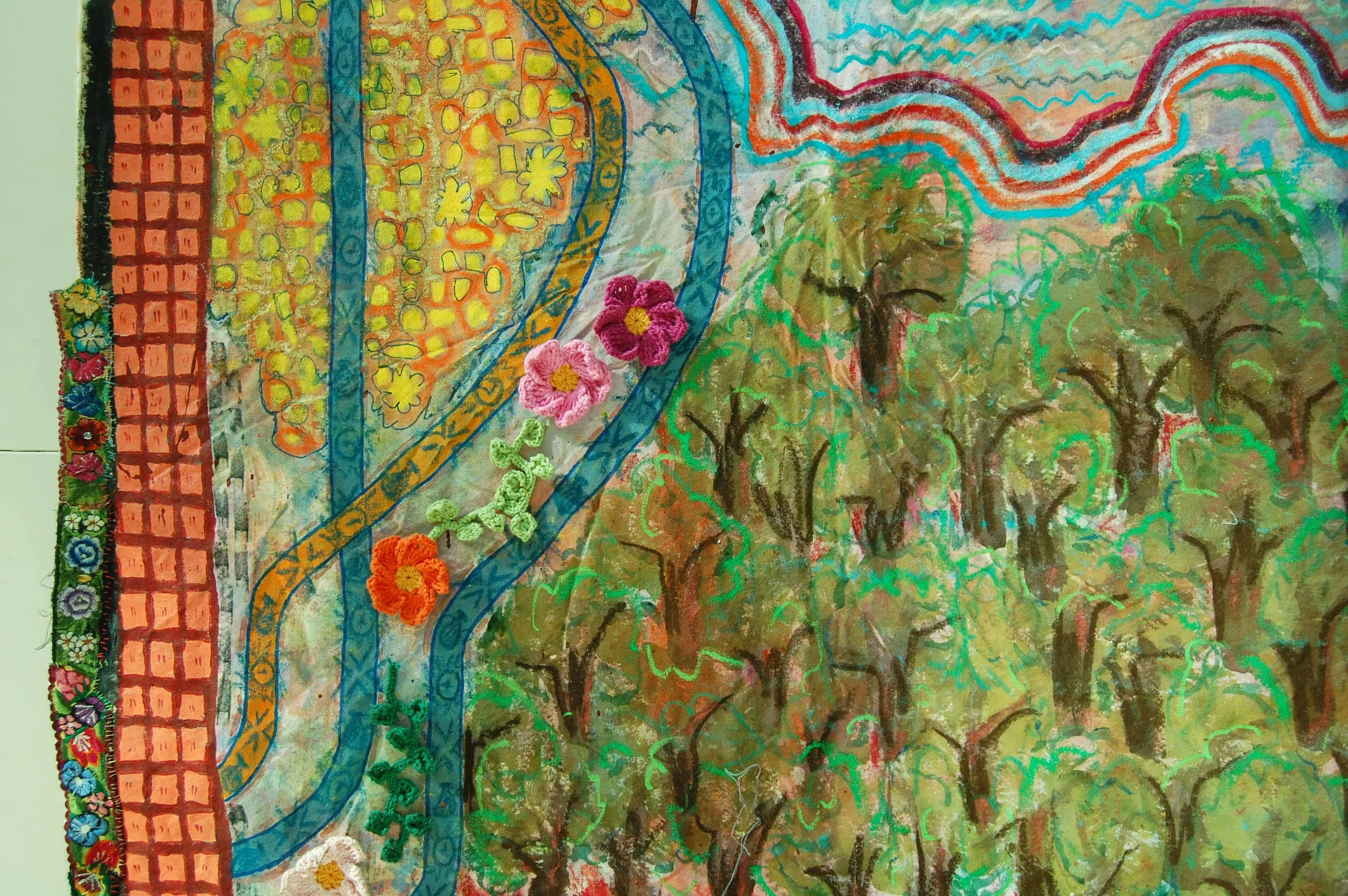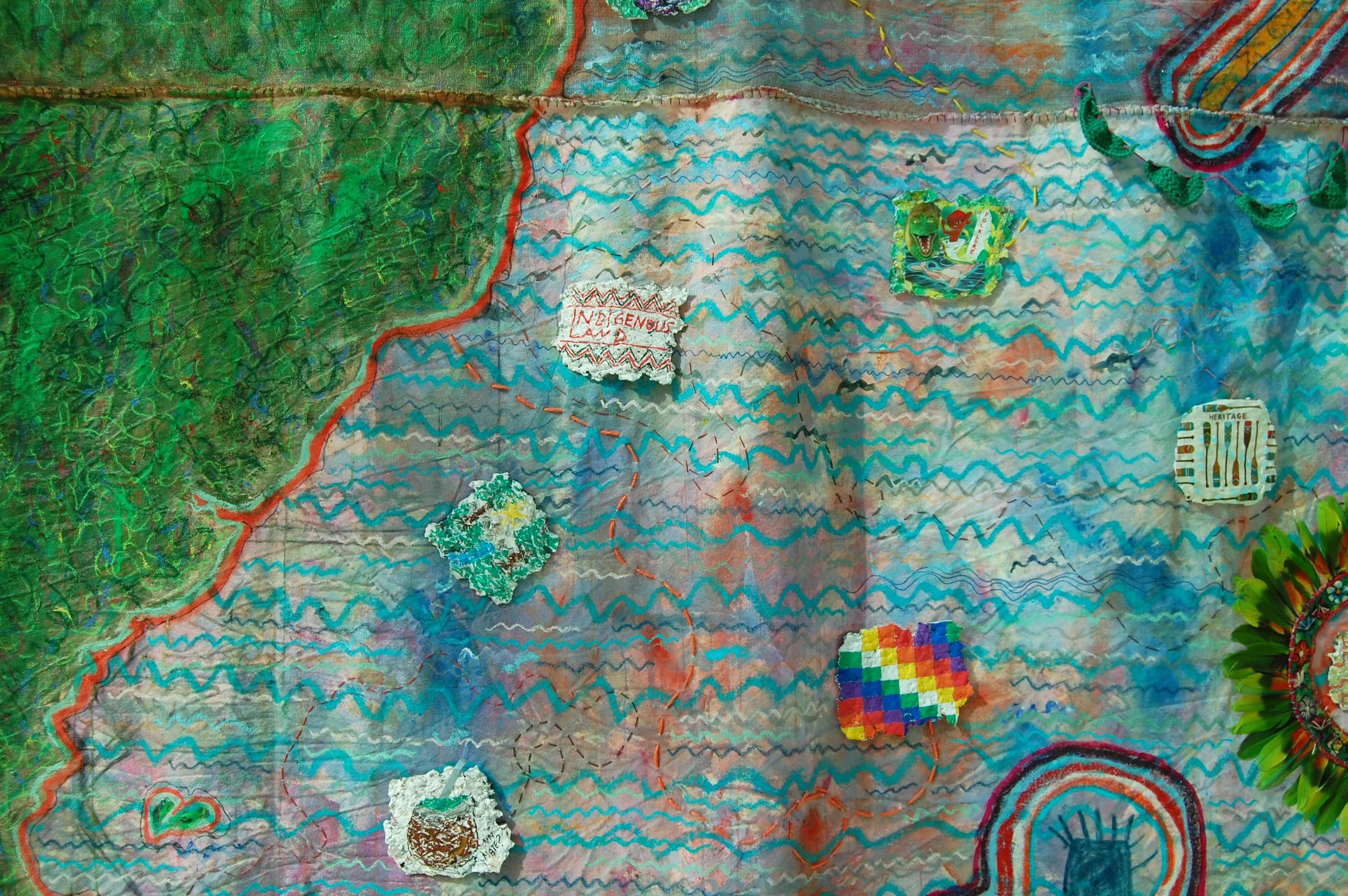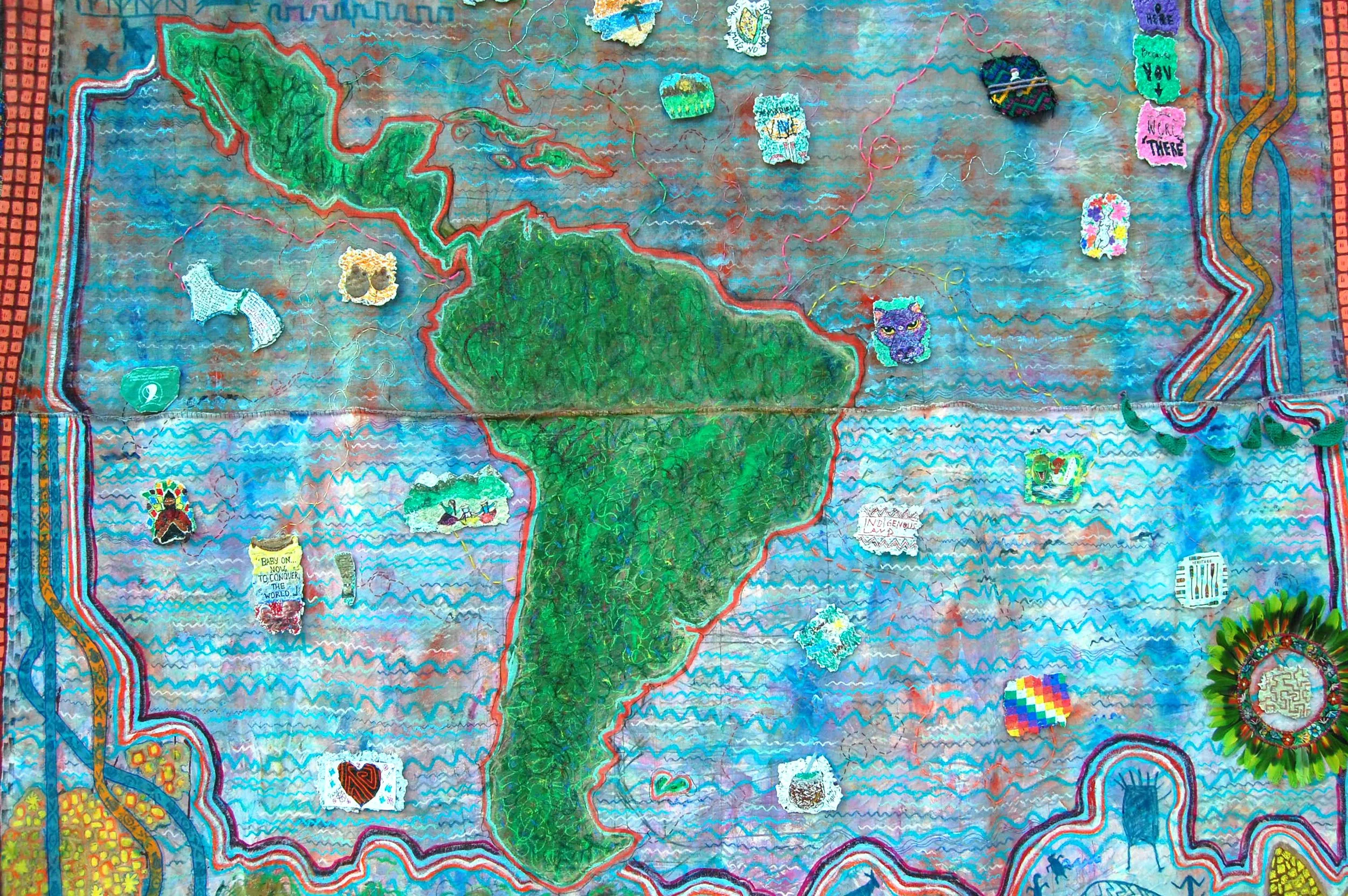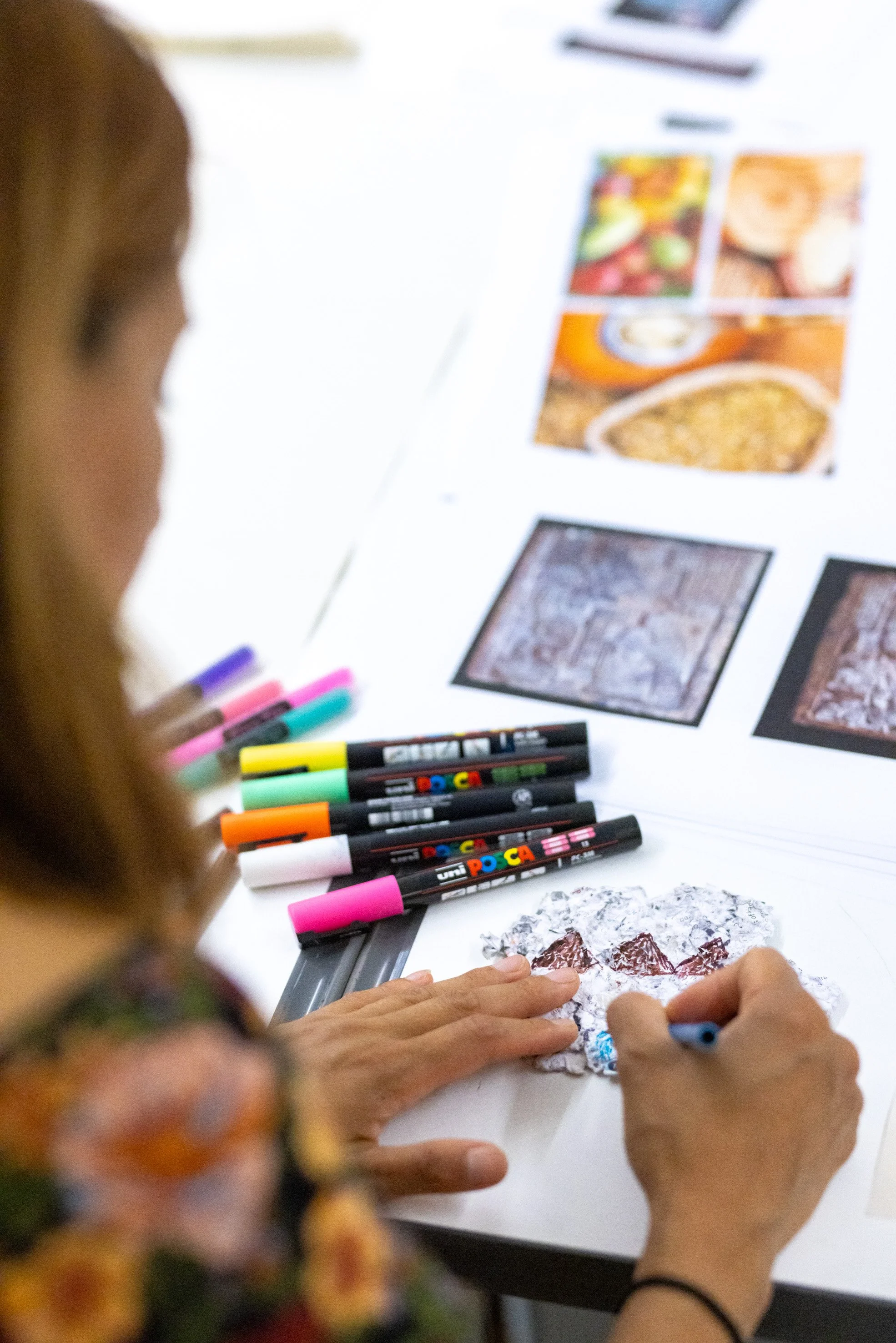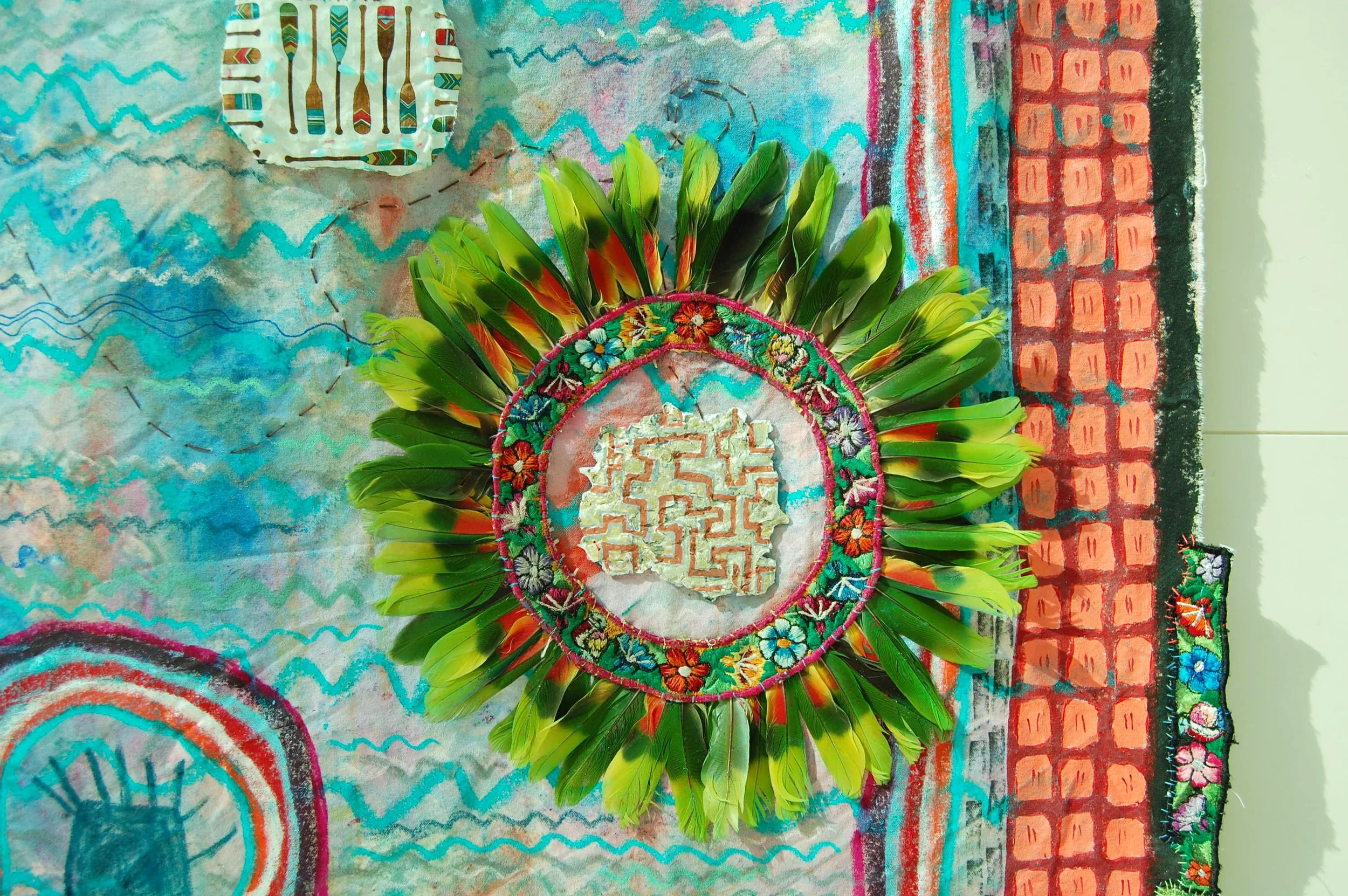
Abya Yala, the land that saw us being born
I was hired by the British Museum to lead a series of creative workshops with a group of Latin American women from a non-profit organization called LAWA. Being invited to the BM, to go see the collections, have a private tour and be able to work on something inside those walls seemed both magical and I also felt a great responsibility taking into account the history of the place and the history of Latin America. As an artist, I was also drawn to the idea of telling a story through objects. Can a story of the continent be told through the collection within the museum? Would the women involved be connected to that story?
I sought out to create a collaborative painting which could be displayed. That was not initially the proposal of the museum, but I believed and still do, that if the idea of working with a minority group and engage with them, should also be to give them a voice. The painting would be a map of the Americas, starting from Mexico and it should have elements and symbols that speak to the participants and that are somewhat related to what we saw in the museum. During this process, I discovered the museum’s collection of Latin American objects to be the smallest. Venezuela, my country, had practically the least objects of them all. I suggested we all bring a few items of our own that better represent our countries, or our own personal stories, so we can tell a more accurate story of where we come from. It was beautiful, we all shared personal stories and explained artifacts and histories, none where existent in the museum beforehand.
In the process of all of this and getting approval and materials from the museum for the painting, I hand made small papers from old pamphlets from the museum. This way each participant could draw, paint or write whatever they wanted to say and that would be added to the map. I took notes from conversations, from the visits to the museum and from everyones objects and I made the painting. Some participants came to my studio out of hours from the project and helped me sew. Some donated certain things like Guatemalan traditional collars, feathers or knitted flowers and flags. I also made a big basket out of papier-mâché for the women to paint, some weaved, some wrote stories and drew pictures. I asked them to write a story on the day of the show and place it inside, invite visitors to tell how they would explain where they are from.
Adapting to the bureaucracies of such a big establishment meant getting creative and looking for solutions. For me, the most radical thing would be to show a beheaded map of the Americas made by Latin women in the hall of the British museum. The painting could not be stretched as a traditional canvas because the wood would be a fire hazard, we could not use nails or hooks. It had to be big so it could be noticed. I decided to counter weight the painting with sacks of black beans, traditionally served in meals in almost all the countries on our map.
We managed to show the work for an entire day in the main hall of the museum.
Contributors: Marta Nuñez, Aimé Macarena Pestarini, Cristina Reynoso López, Vicky Carillo Mullo, Mónica Cecilia Jiménez, Silvana Fernandes Lulia Jacob, Paola Carrasco Vásquez, Julia Dantas, Fernanda Harumi Martins, Beatriz Feitosa Santos, Marilin Dayanara Granda, Verónica Posada Álvarez, Daniela Londoño.
